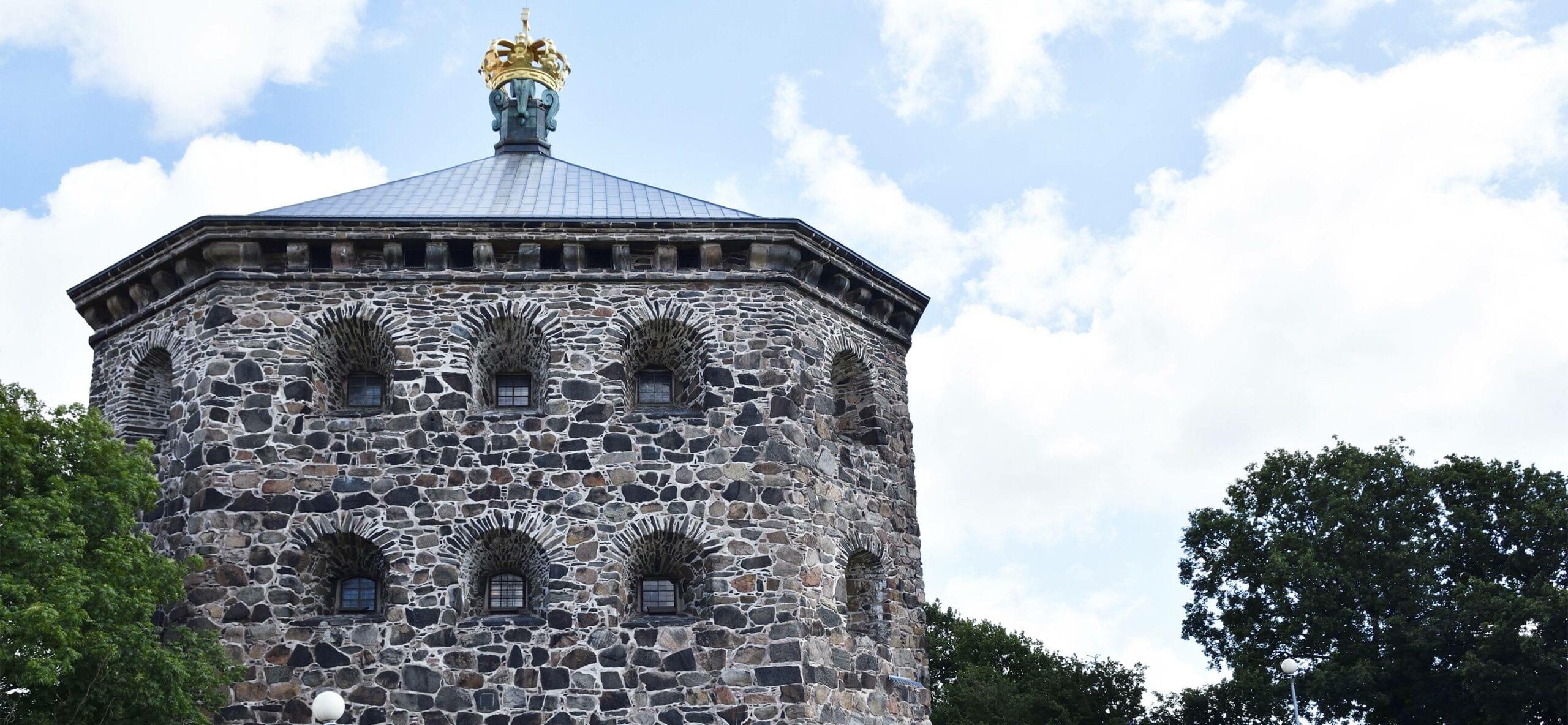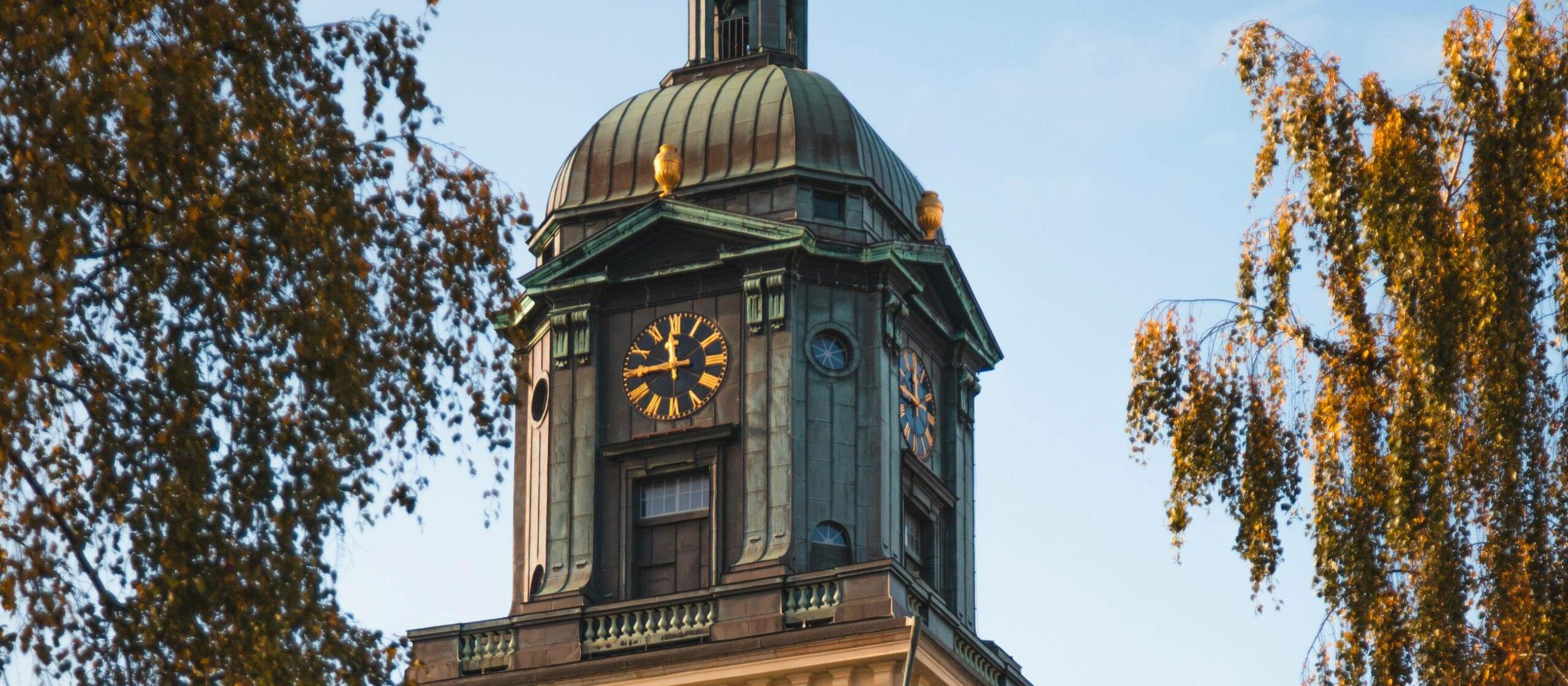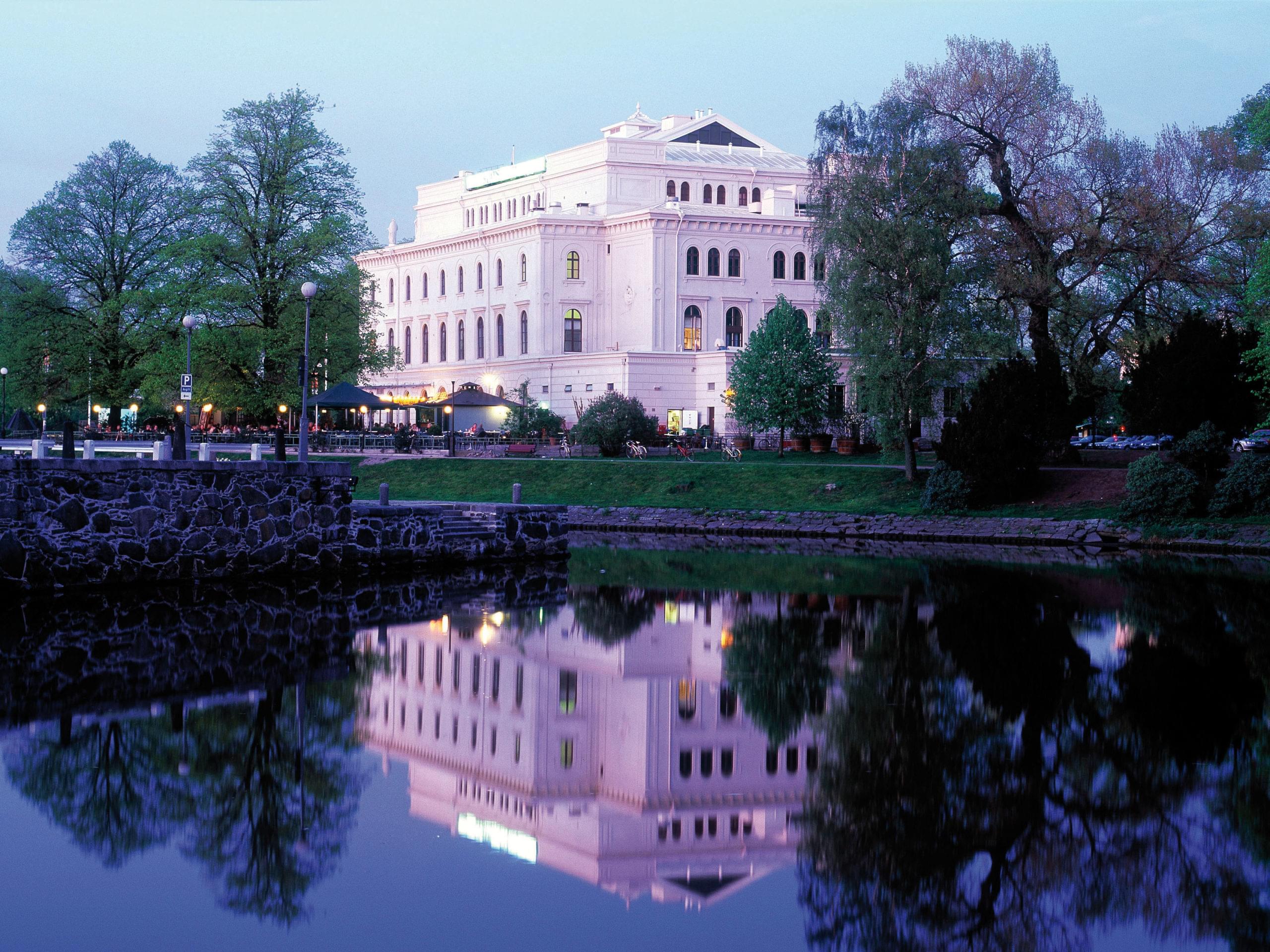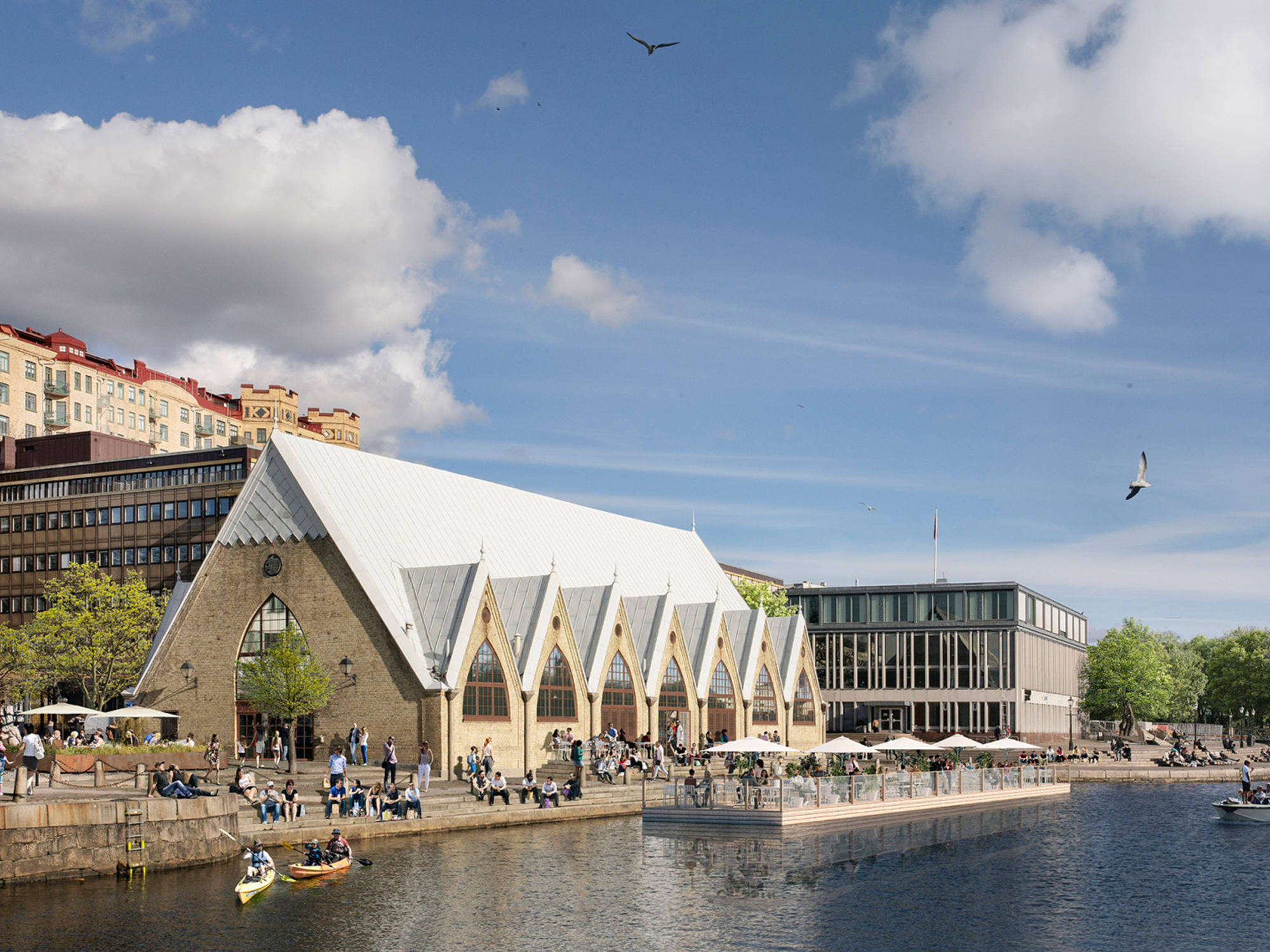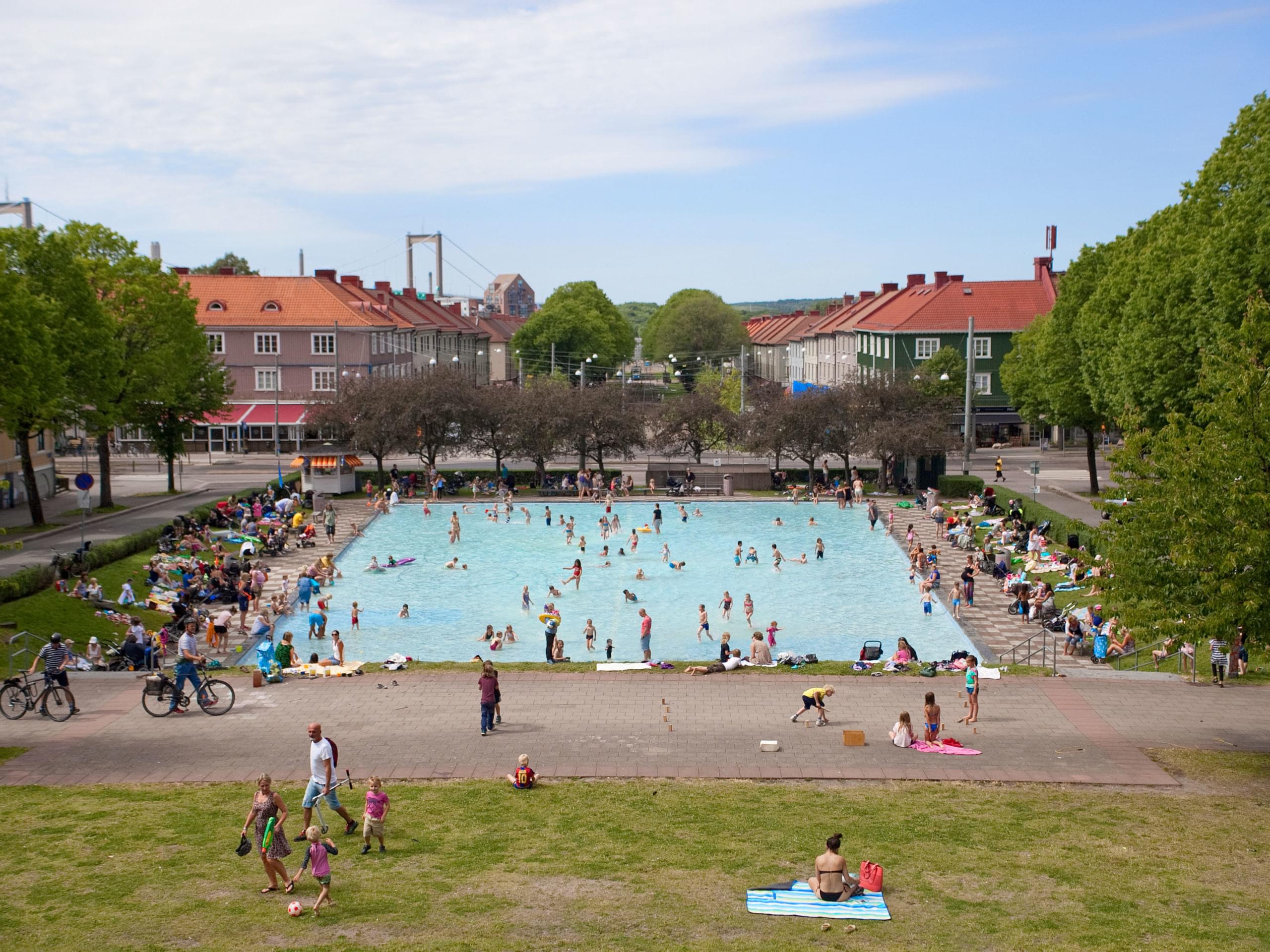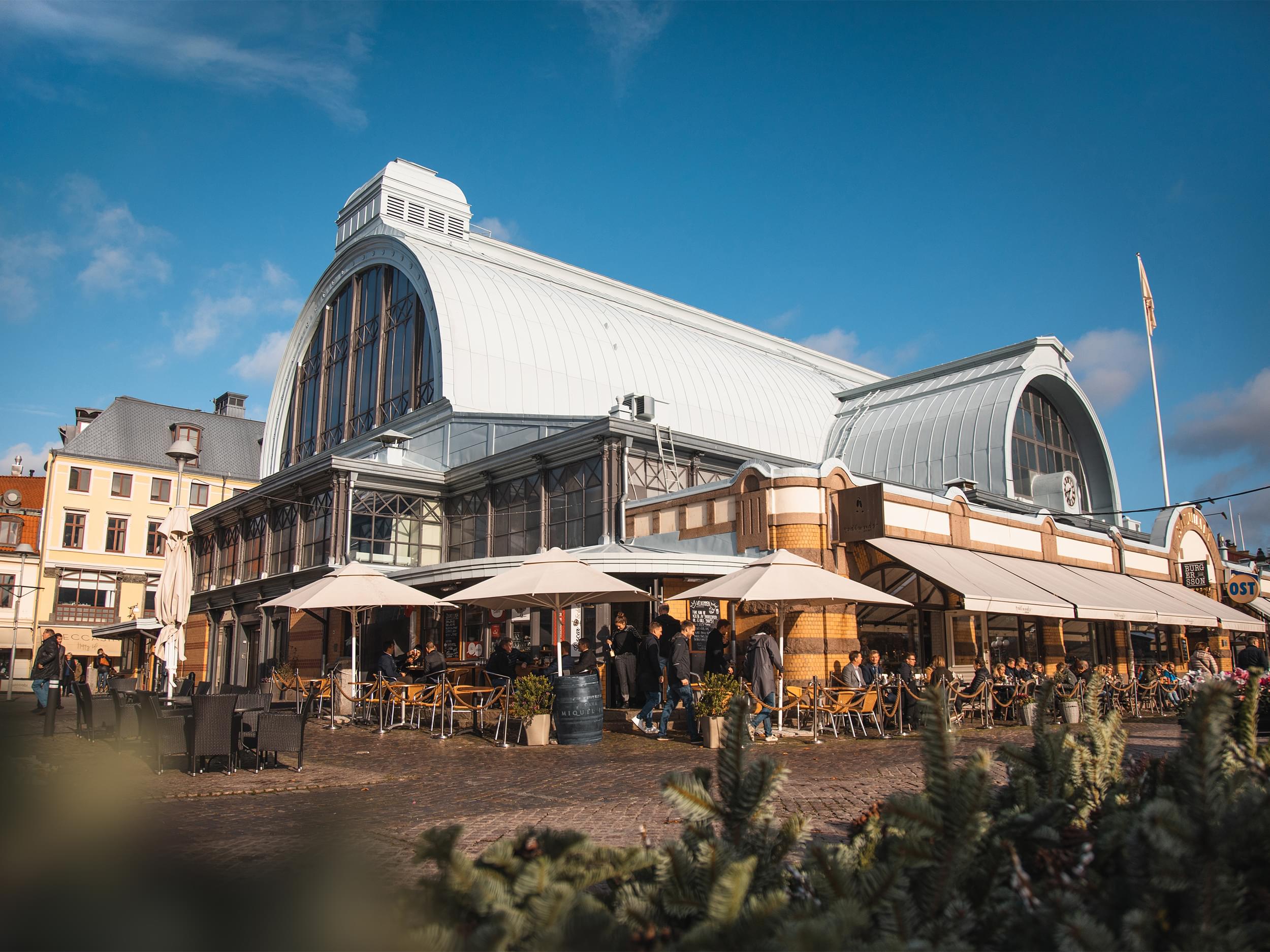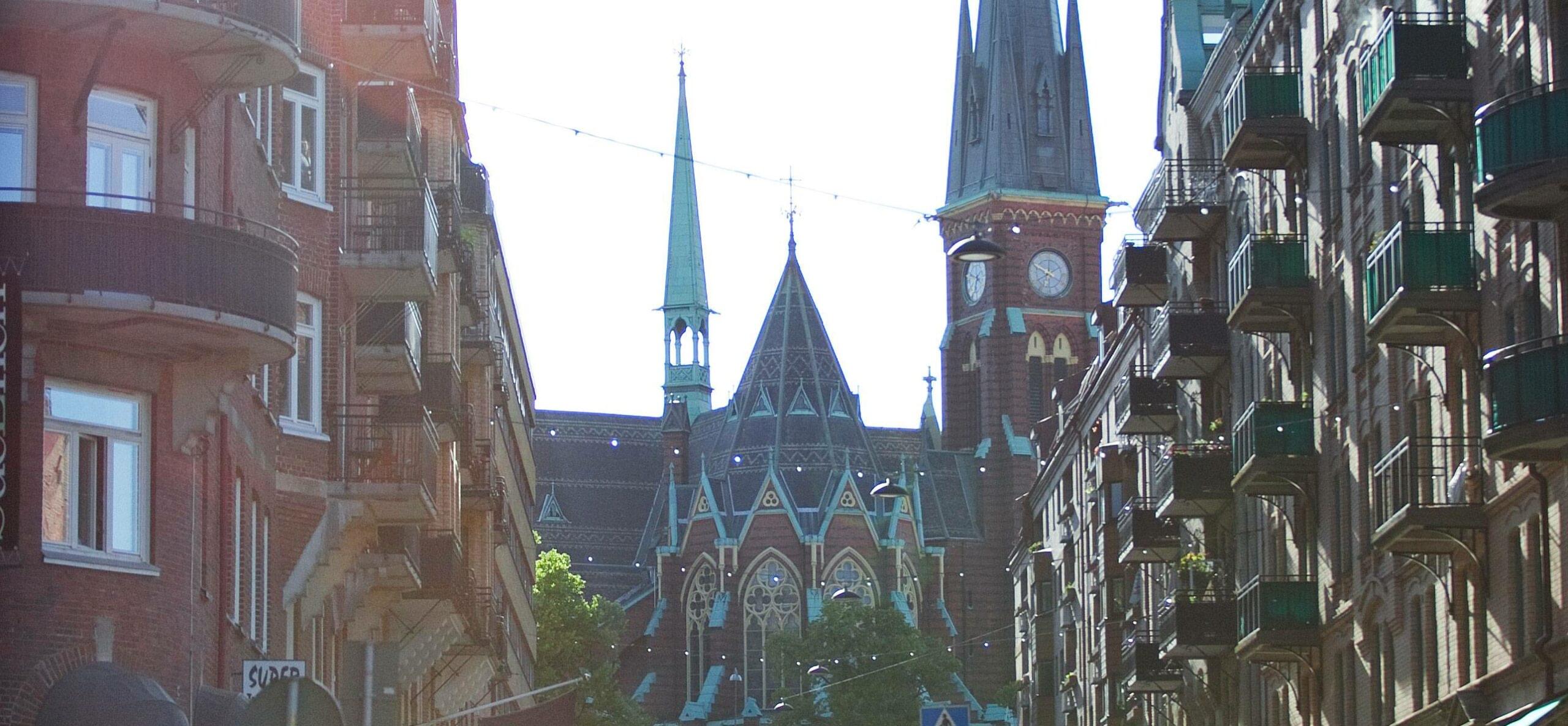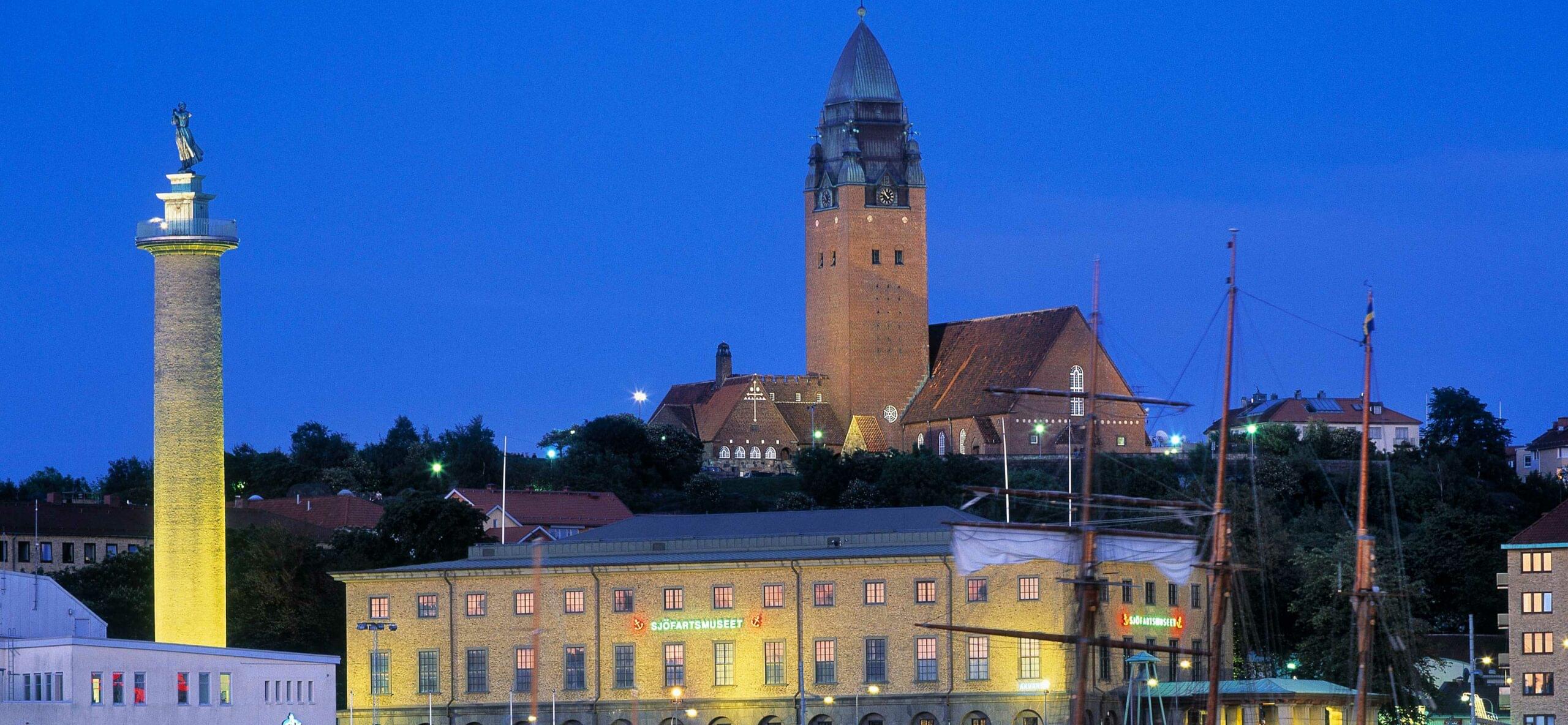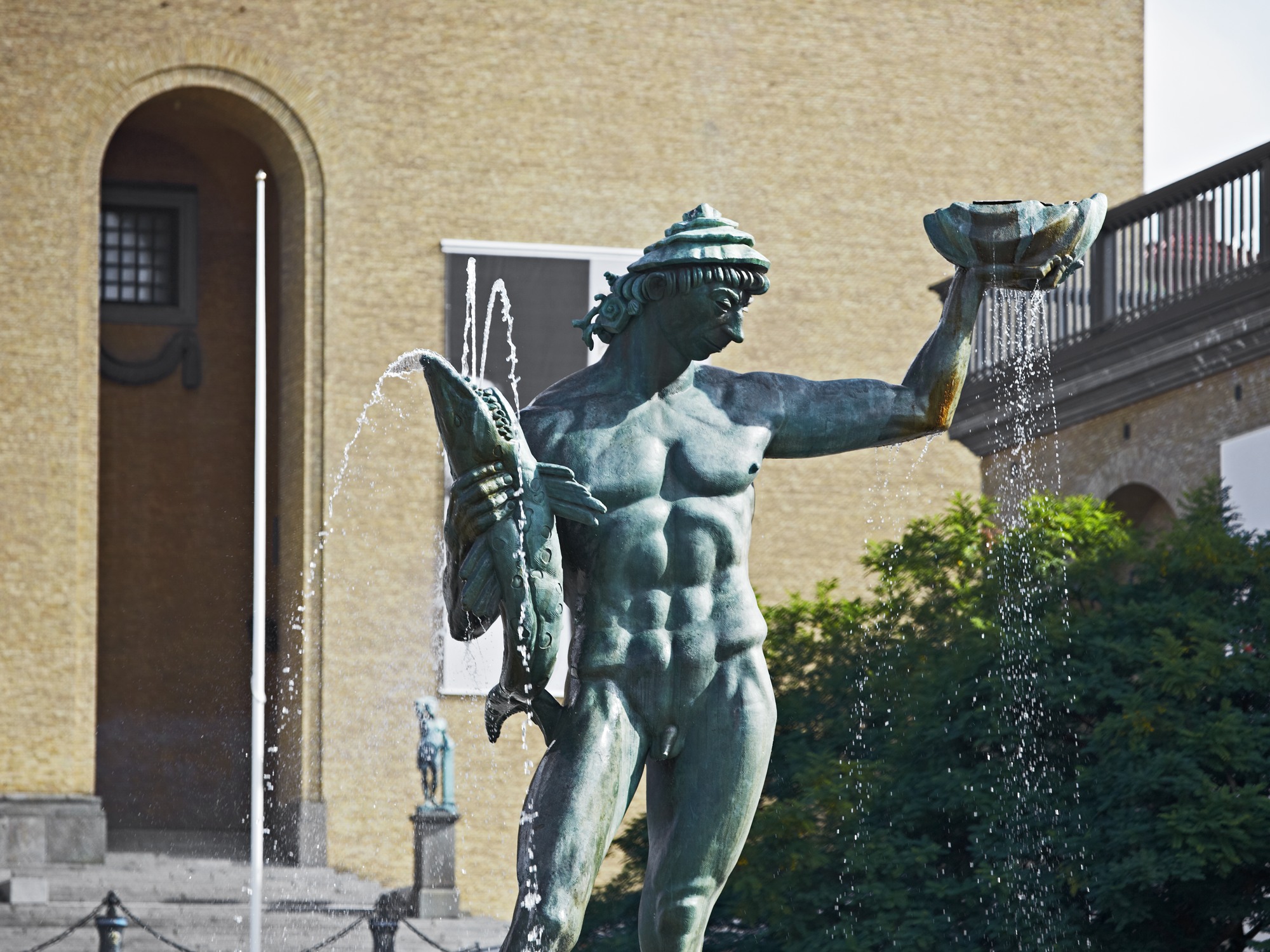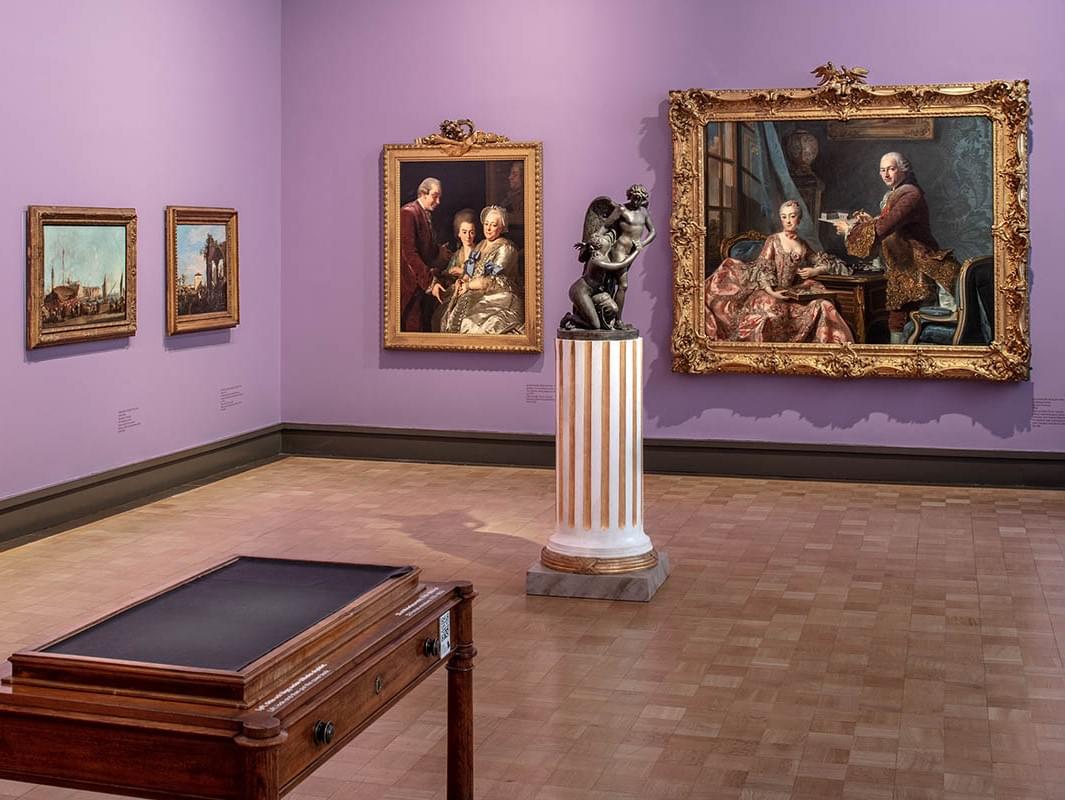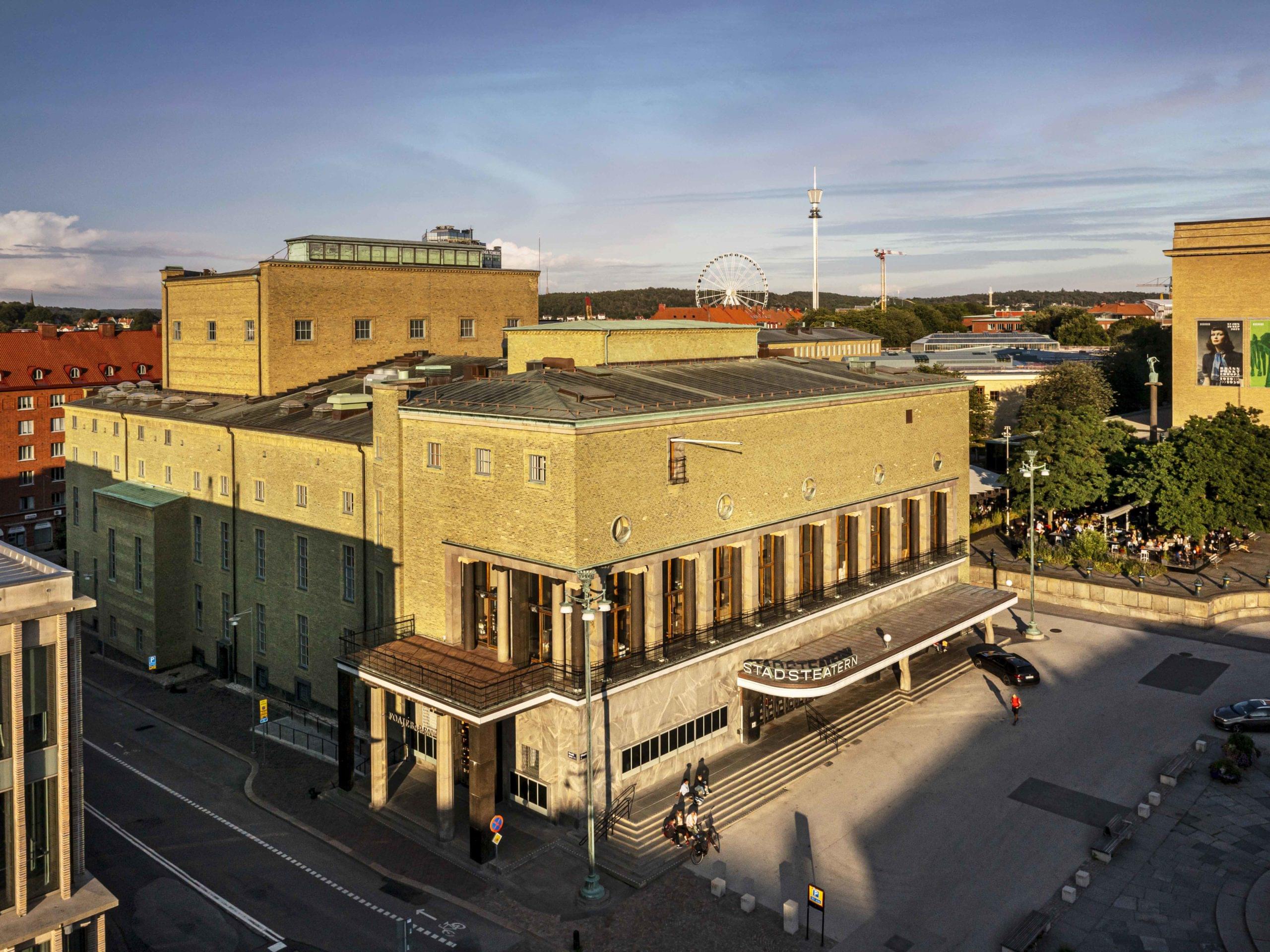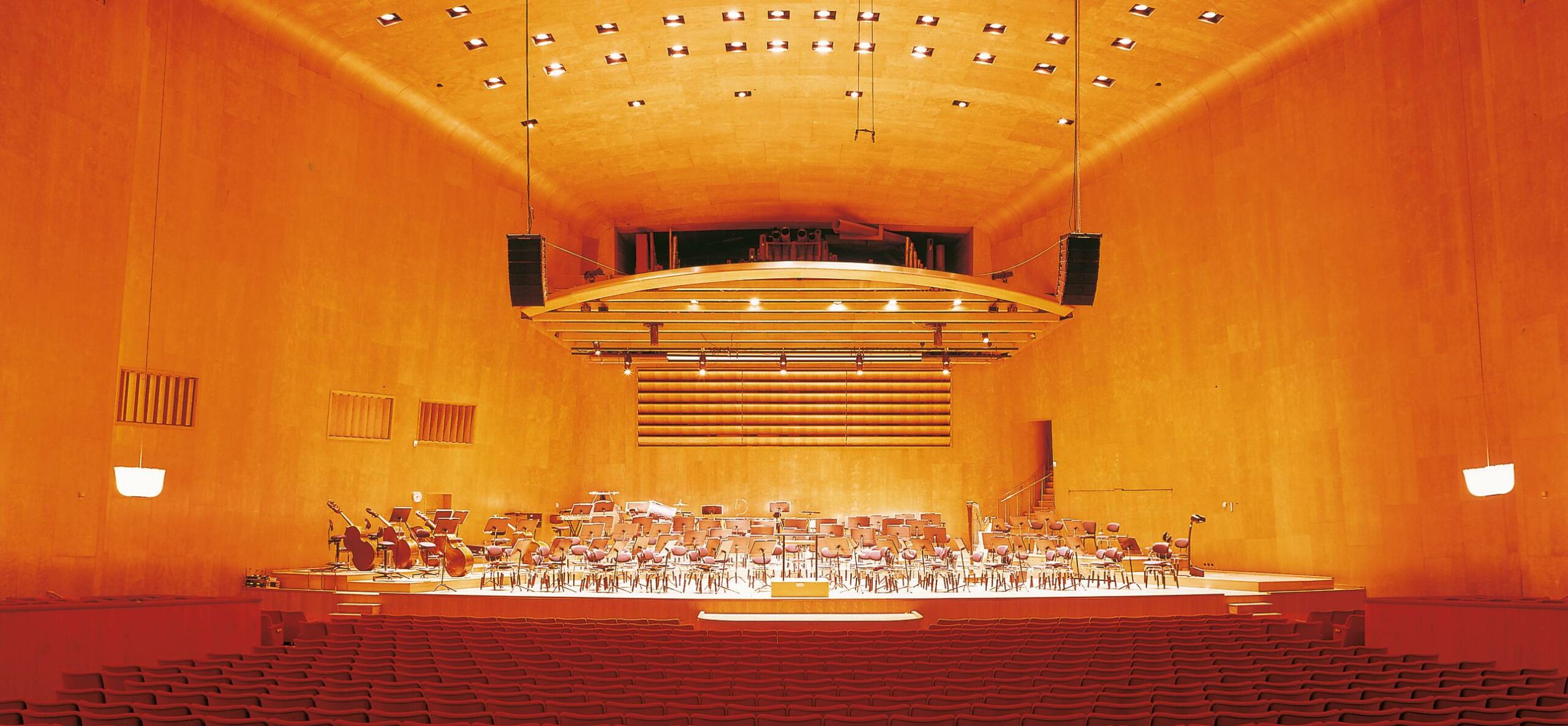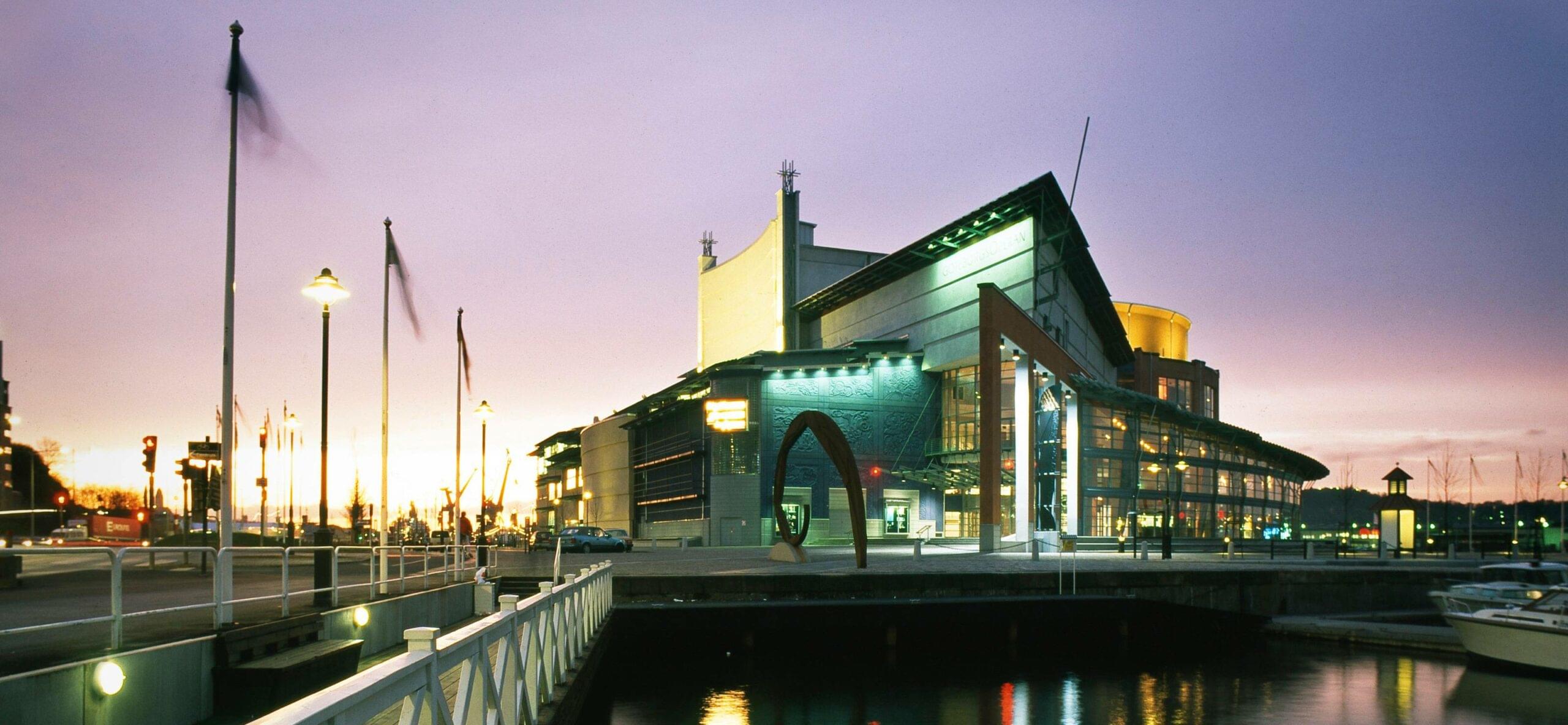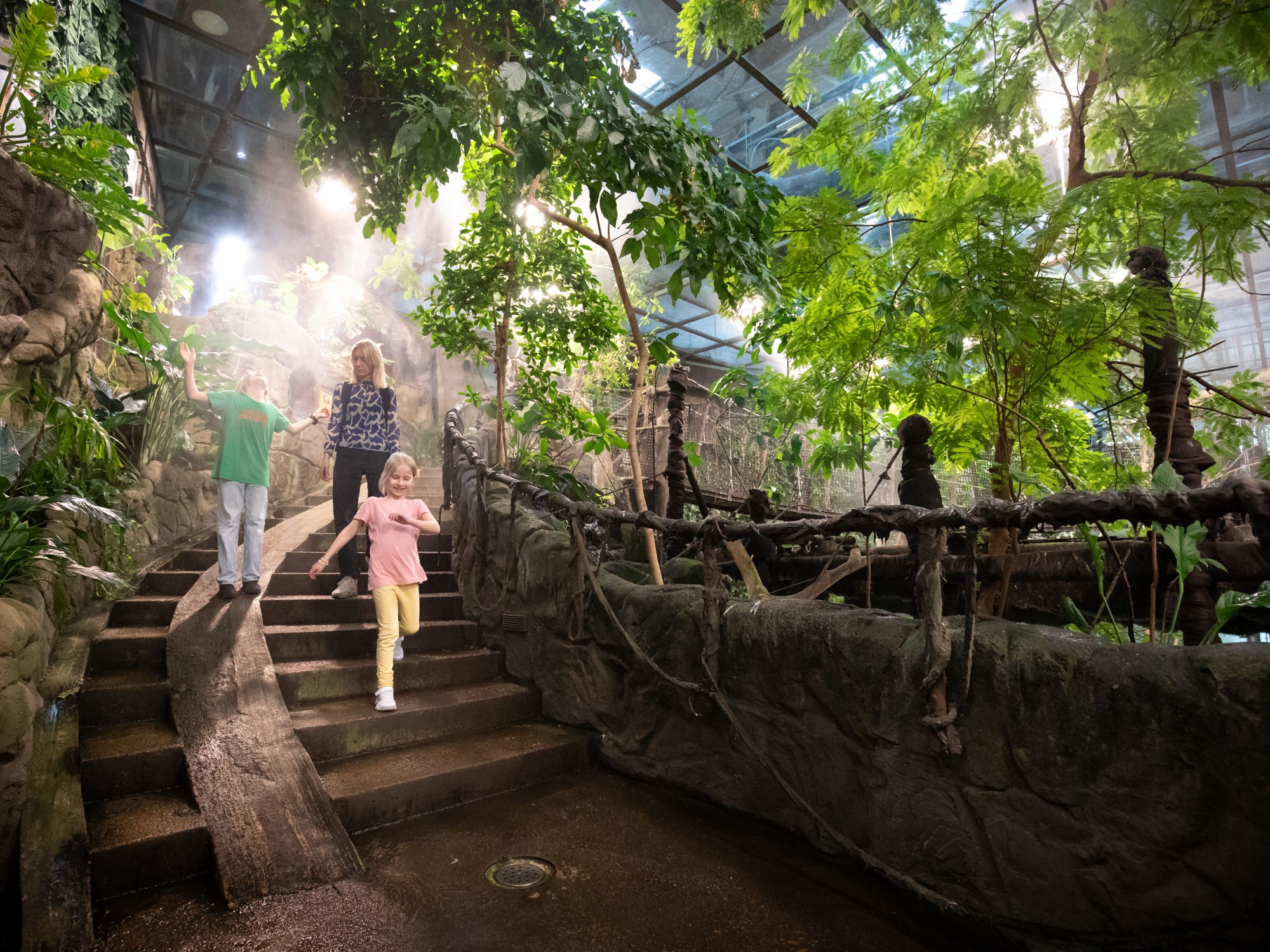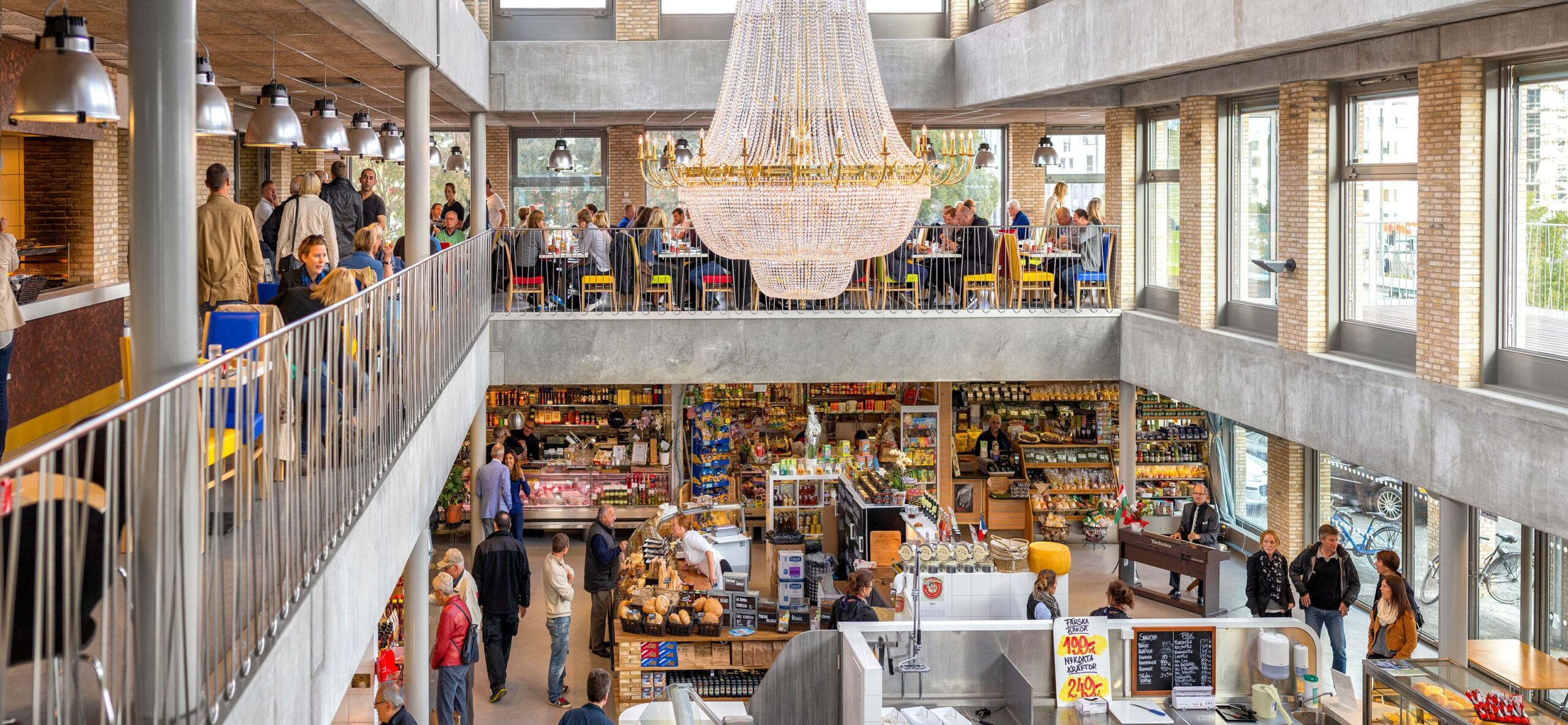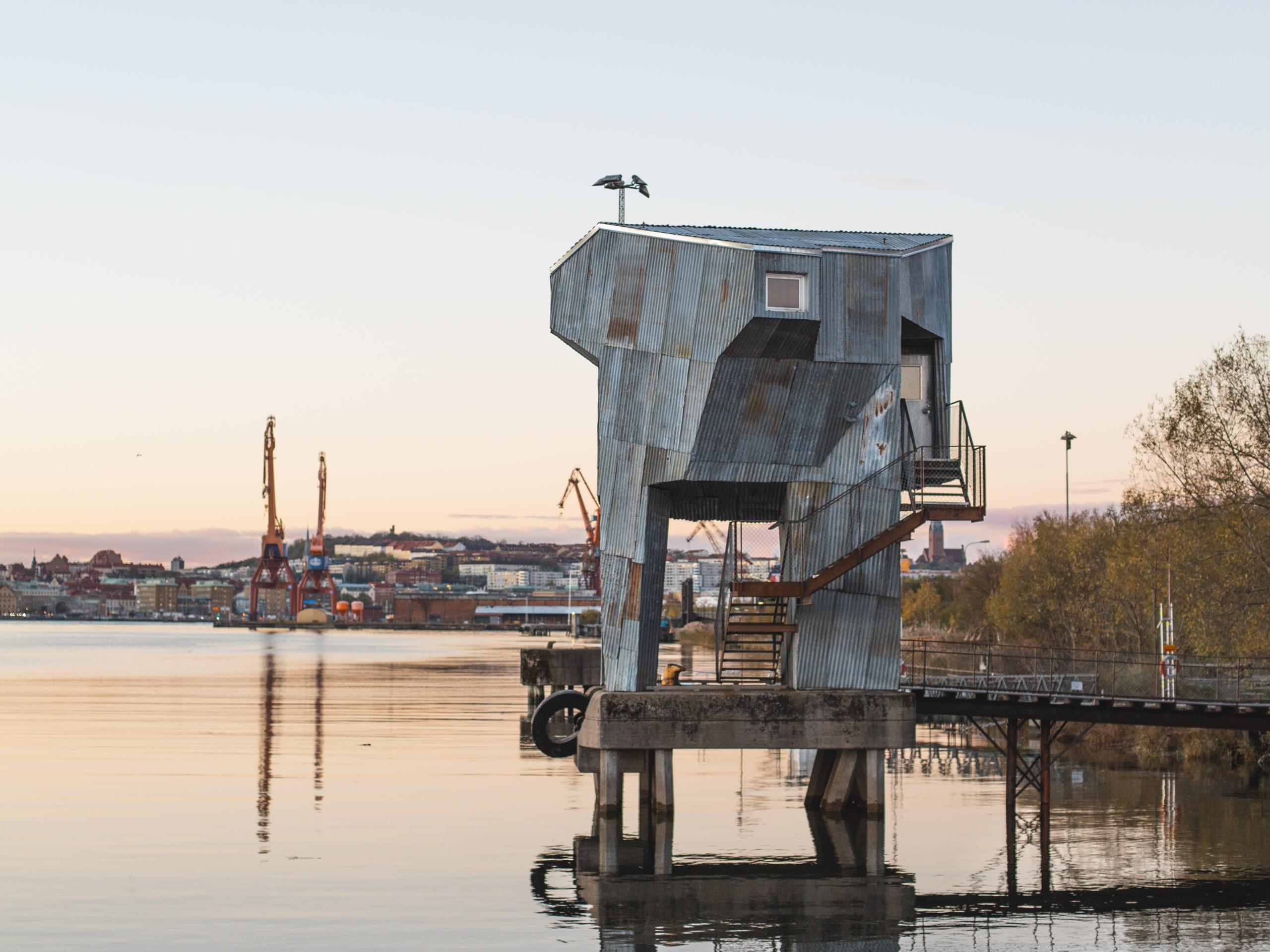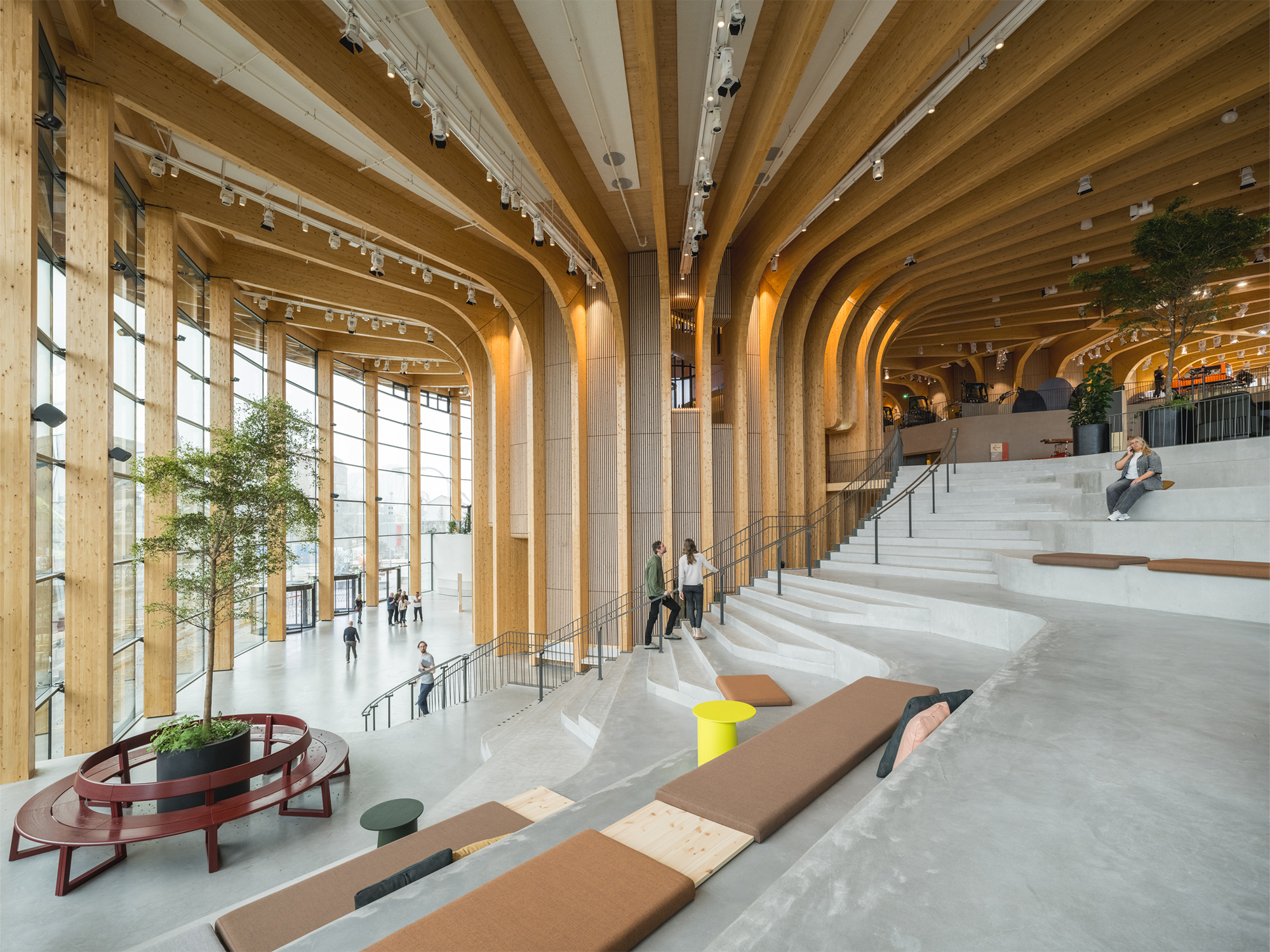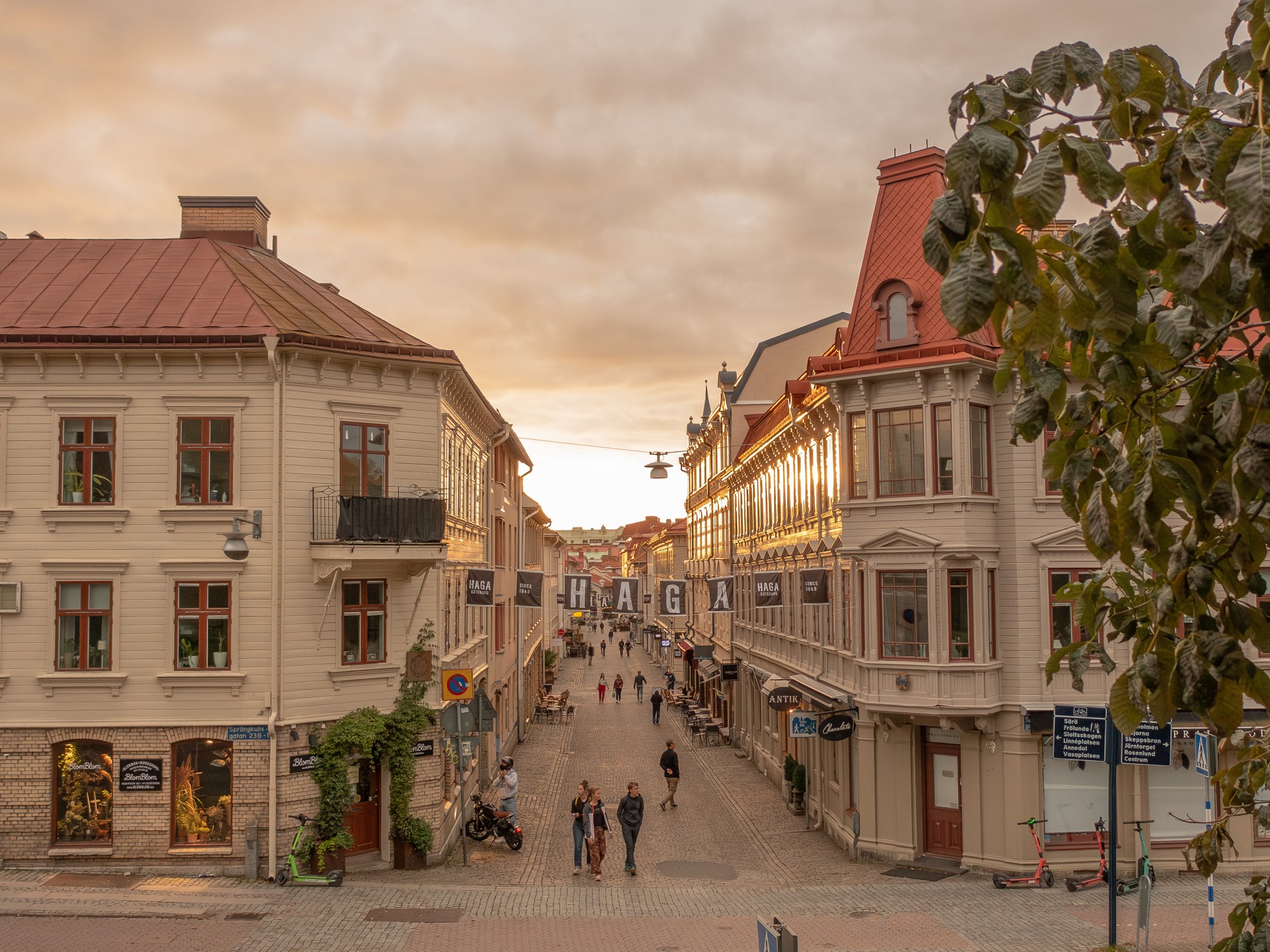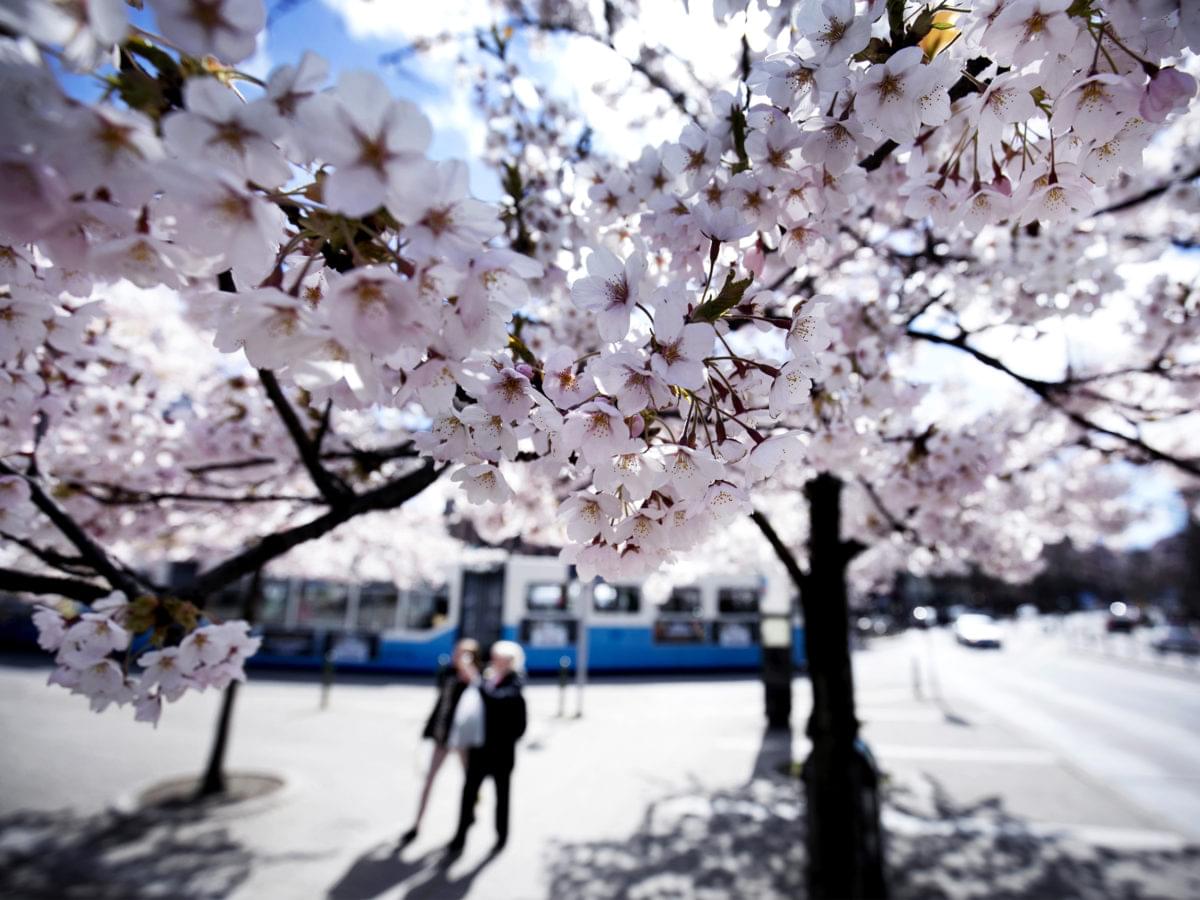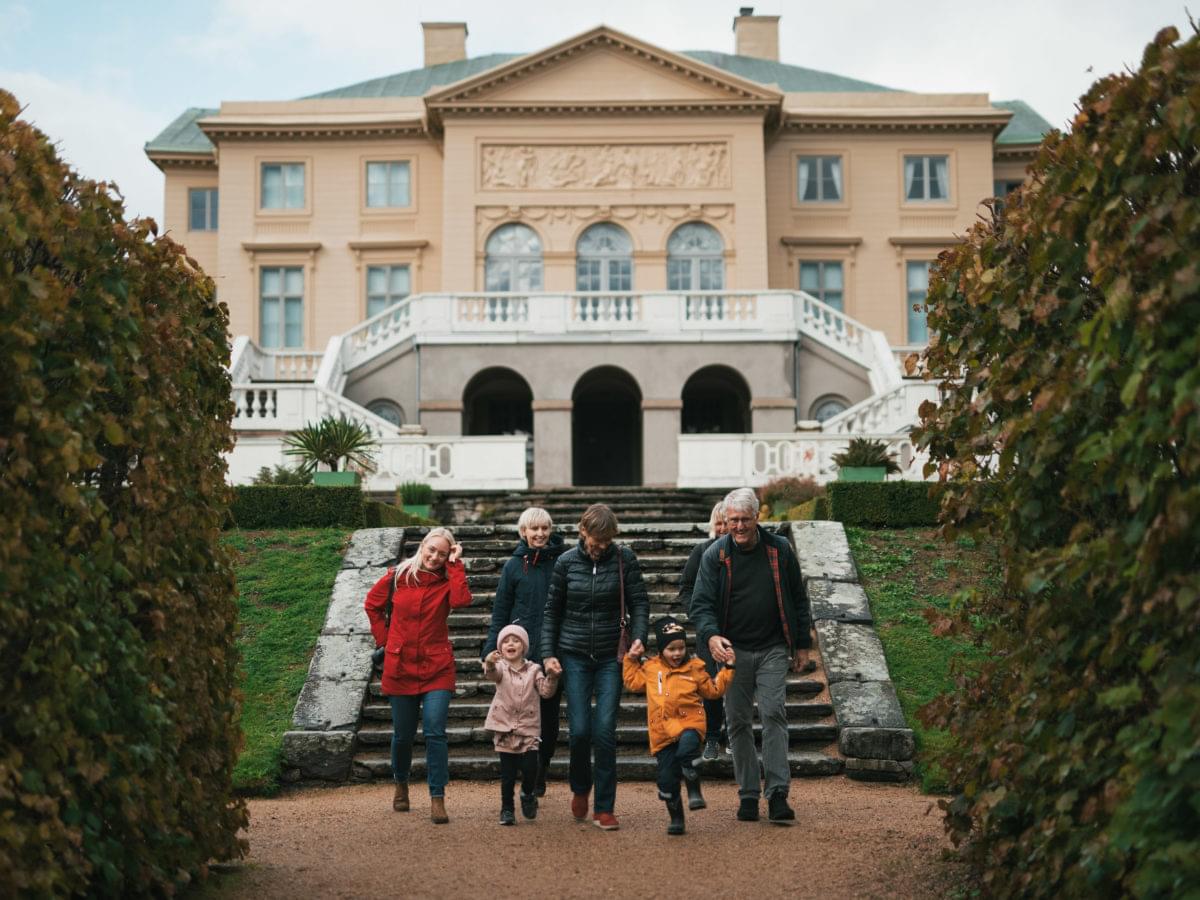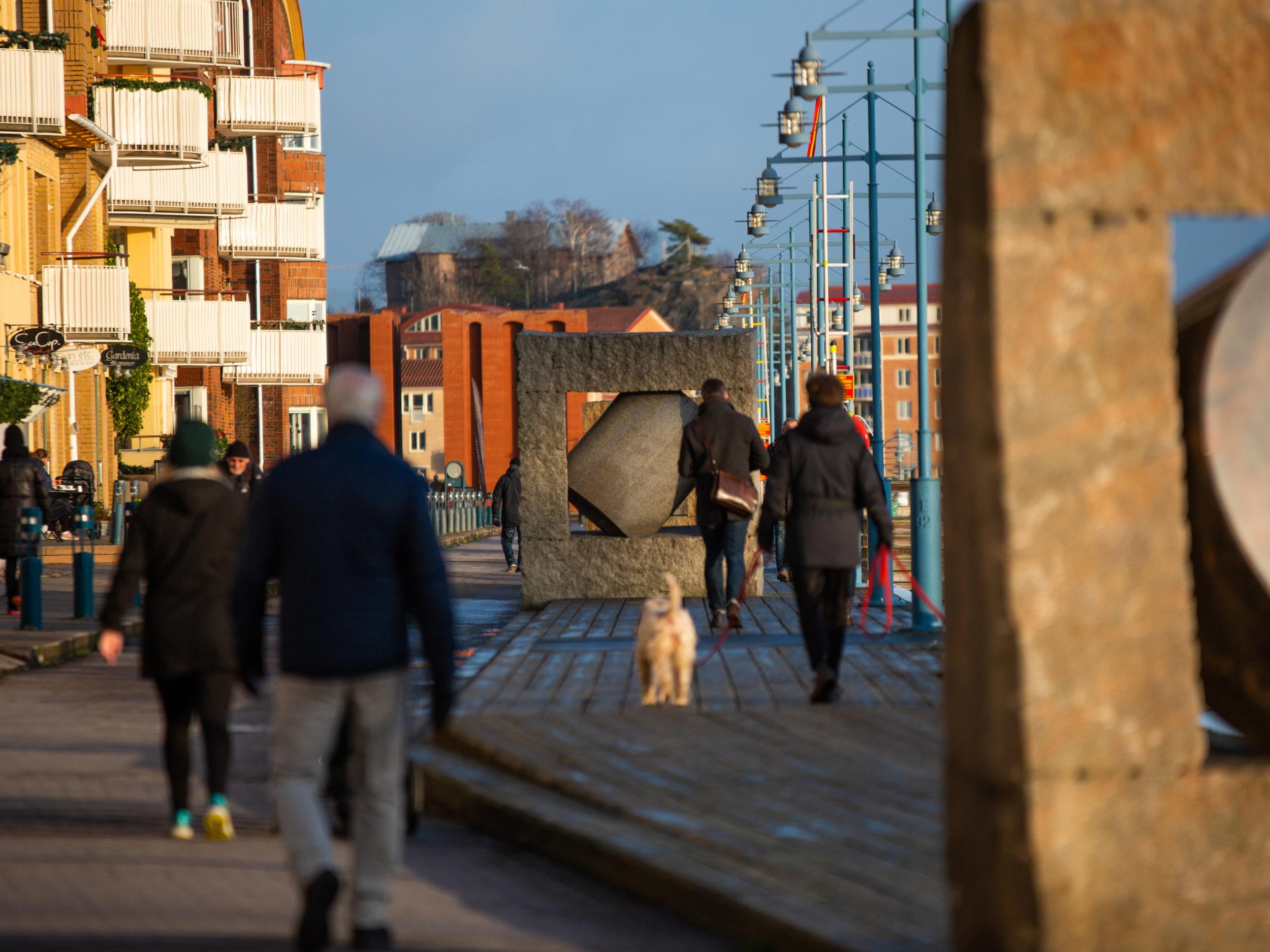We have handpicked some of Gothenburg’s sweetest design gems for you and divided them into three periods: up until the 20th century, the first half of the 20th century, and from the 1950s until today. We’ll also have a sneak peak at what the future might bring.
We suggest you explore this architectural treasure by foot, combined with public transport.
Scroll down and you’ll find a map to help plan your design tour!
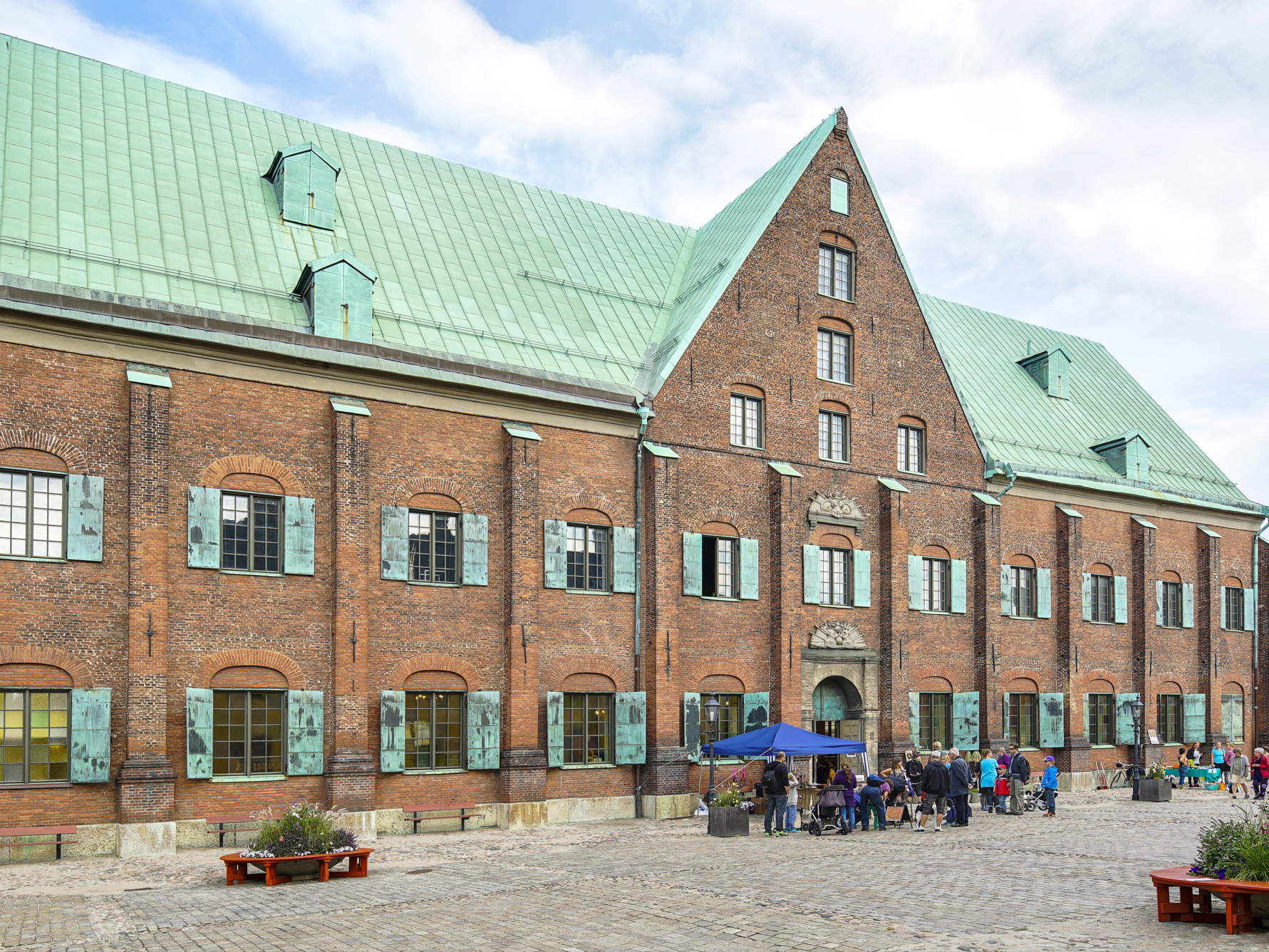
From the 17th century to the beginning of the 20th century
Residenset (The Residency)
Länsresidenset, or Torstensonska palatset as it is also called, at Södra Hamngatan 1 was completed in 1651 and is the oldest residential building in Gothenburg. The house was built in Dutch Renaissance style and has housed both royals and governors over the years. Residensbron, the Recidency Bridge, crossing the harbour canal got its name after the building.
Kronhuset
Behind the square Gustaf Adolfs torg you’ll find Kronhuset. The Dutch style building was completed in 1654 as a storehouse for military equipment and is one of the oldest buildings in the city. Nowadays the neighbourhood is a vibrant craft centre where the Kronhuset is used as a concert hall among other things and the small surrounding buildings house arts and crafts studios.
Haga and Skansen Kronan
Haga is one of the oldest neighbourhoods in Gothenburg and was actually one of the first suburbs even though it is now located in the city centre. The area was planned as early as mid 17th century. The neighbourhood has kept quite a bit of its original charm and the picturesque paved street Haga Nygata is lined with well-kept, old-style wooden houses.
On the hill Risåsberget in Haga, the fortress Skansen Kronan is situated. The former fortification, designed by Erik Dahlberg and completed in 1689, offers a spectacular view of the city.
The Poorhouse
At Stampgatan 1-3 in the city centre the former Poorhouse is located. The house, which was built in 1726 and is the oldest preserved wooden house in Gothenburg, is located right by the canal that was built between the moat and the creek Mölndalsån. That canal came to be known as Fattighusån, Poorhouse Creek, a name that is still sticking.
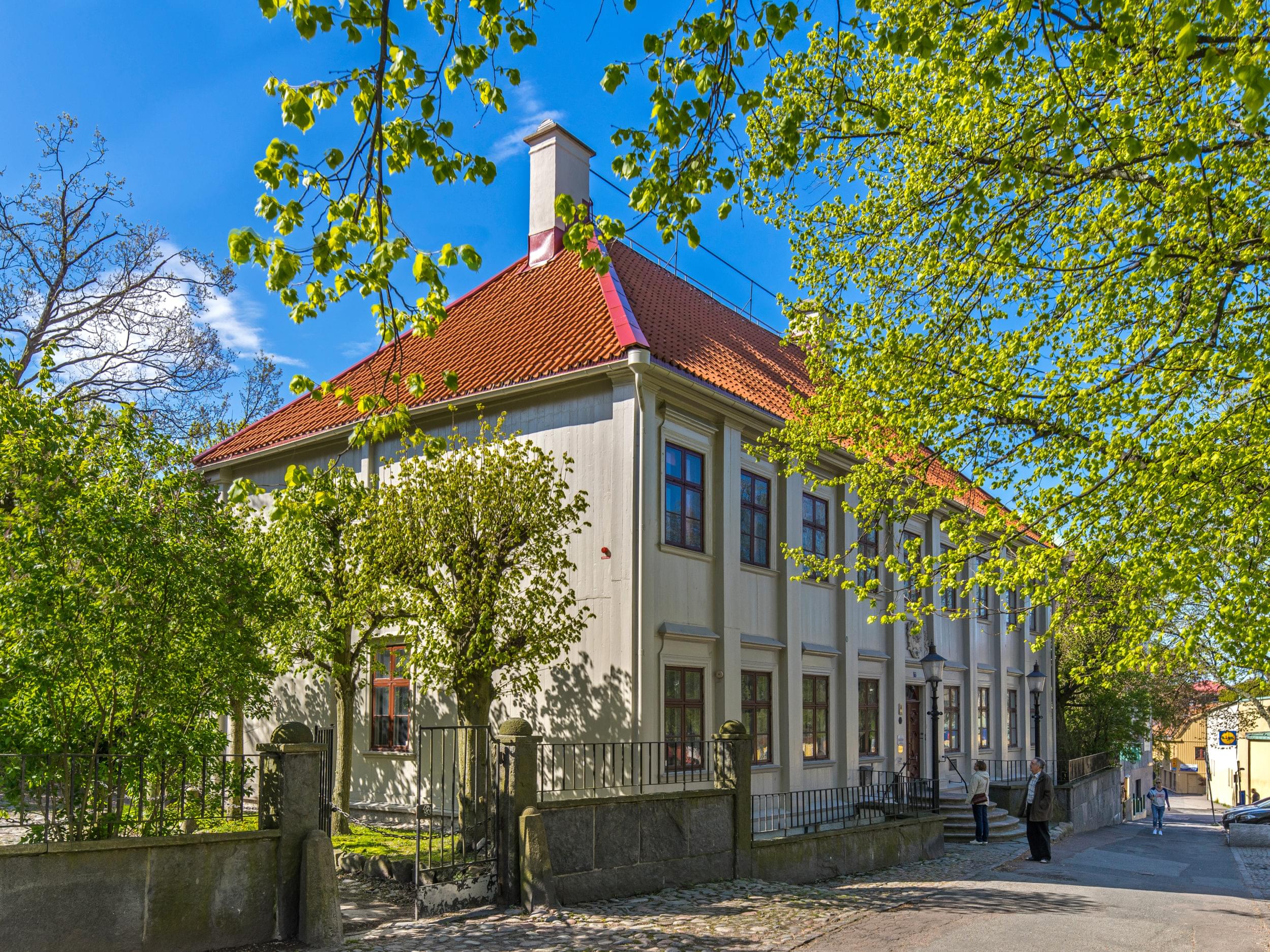
Gathenhielmska huset
At Stigbergstorget 7 in Majorna you’ll find Gathenhielmska huset. It was completed in 1747 and is the only of its kind preserved in Gothenburg from that time. The wooden two-storey house, built in a Late Baroque style and with a steep hipped roof, has always been a point of interest and in 1964 it became the first Listed Building in Sweden and thereby enjoying the strongest cultural and historical protection available.
The East India Company building – Museum of Gothenburg
At Norra Hamngatan 12 the East India Company had their headquarters. The building, taking up an entire block along the harbour canal, was completed in 1762. Here they had store rooms, offices and an auction hall. The East India Company shut down in 1813 and the building has been used for a number of things since. In 1996 The museum of Gothenburg moved in with exhibitions as well as offices.
Queen Christina’s hunting lodge
… is no hunting lodge, nor was it ever owned or inhabitated by Queen Christina, but the house is still interesting. The small yellow building was erected at Södra Liden 26 in 1806, but was moved in its entirety to Otterhällegatan 16 in 1972 to make room for new houses. The name might stem from the 18th century when the basement held an ale-house, frequented by soldiers from the nearby bastion Christina Regina.
The Sugar Cane Factory and Carnegie Porter Brewery
Klippan, by the Älvsborg bridge, is known for the former Carnegie porter brewery and the contemporary art centre Röda sten. The brewery was once among the largest employers in the city, with around 450 employees in 1890. These were also busy times for the sugar cane factory next door. Today the brewery is hotel Waterfront and the sugar cane factory Sockerbruket, is housing arts and crafts studios, among other things.
The Cathedral Domkyrkan
Göteborgs Domkyrka, or Gustavi Domkyrka after King Gustav II Adolf, is located in the city centre, surrounded by the streets Kungsgatan, Västra Hamngatan, Kyrkogatan and Korsgatan. The cathedral is the third one in this spot. The first one opened in 1633 and burned down in 1721. The second one was then opened as soon as 1722, but burned down in 1802. The third and current church was opened in 1825, although it was not completely finished until twelve years later, when a second inauguration was held.
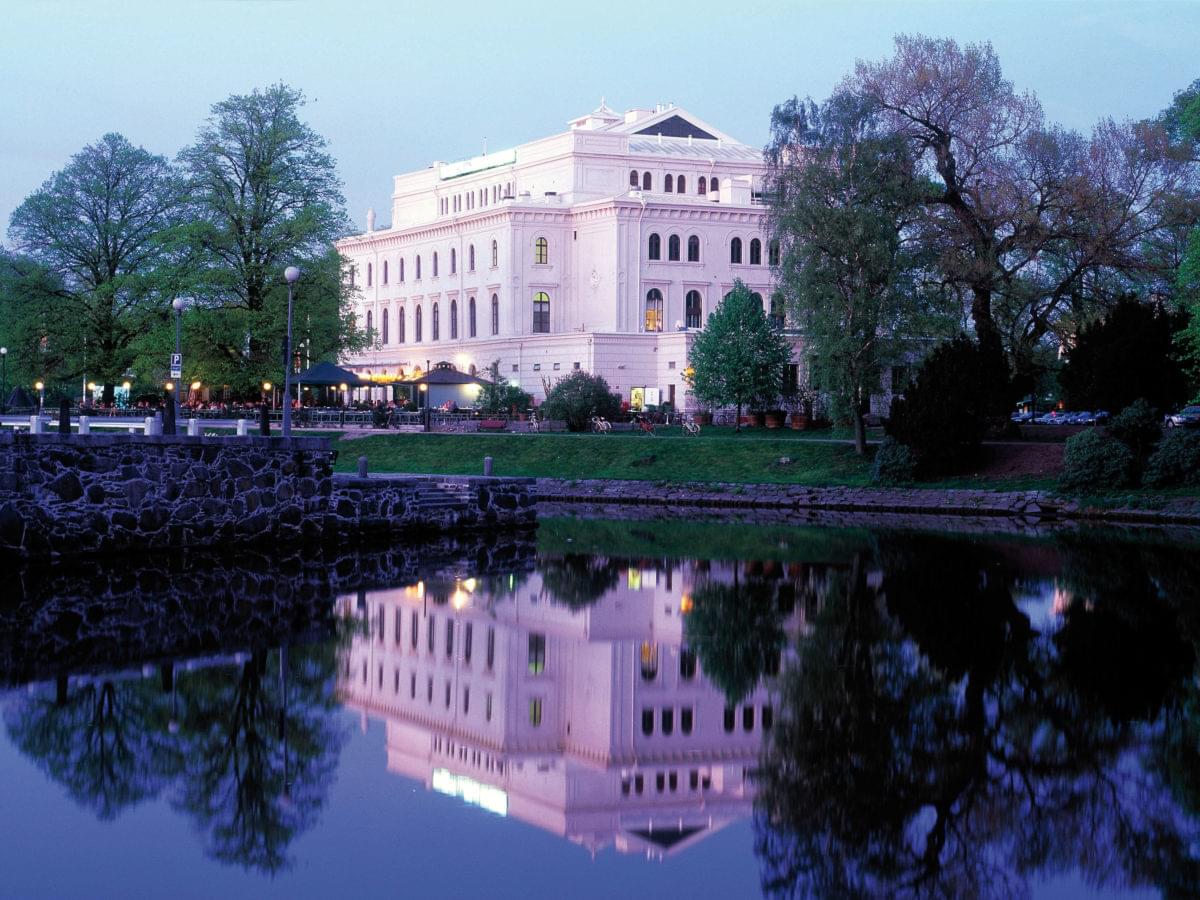
Stora Teatern
The grandiose theatre Stora Teatern opened in 1859. The functional, Neo-Renaissance theatre features a rusticated ground floor facade. Inside, the rounded auditorium with its gilded ornamentation, ceiling paintings and stucco details has been preserved as it was.
Feskekôrka
The fish market Feskekôrka – the Fish Church – was completed in 1873 and is one of the most famous buildings in the city. It was designed by Victor von Gegerfeldt, who was also the City Architect in Gothenburg 1872–1896. The fish market is closed for renovations until 2023.
Typical wooden houses in the west
The wooden County Governor’s houses (landshövdingehus) from 1875–1940 is one of Gothenburg’s most typical building styles. This type of house is for example found in the western neighbourhoods of Majorna and Kungsladugård, for example around Mariaplan. They are characterised by a ground floor made of stone, followed by a second and third floor in wood. This was partly due to fire regulations. In the 1940s around half of the population lived in this type of house.
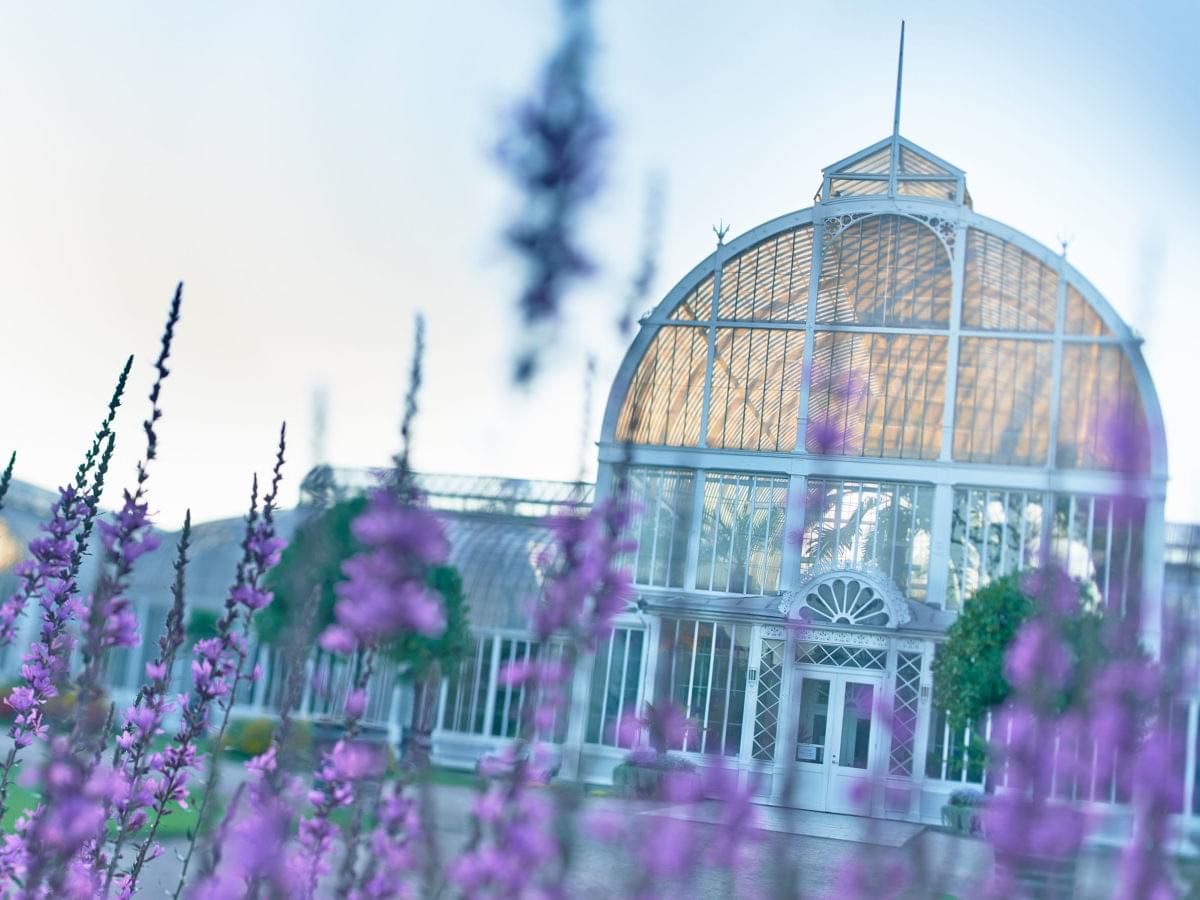
The Palm House
In the centre of the Garden Society of Gothenburg you’ll find Palmhuset, standing like a glittery piece of art made from glass and cast iron. It was modelled on the Crystal Palace in London and has been a popular destination since 1878. In an area measuring almost 1,000 square metres you can enjoy tropical warmth and exotic plants, including palm trees, as well as a glimpse of the previous century’s sense of style in contrast to that of our time.
Turn-of-the-century Houses
In the city centre there are many grandiose turn-of-the-century houses, like along the main boulevard Kungsportsavenyen, where for example No 1 from 1882 has always been a fashionable address, or in the neighbourhood Vasastan where you’ll find many well-kept stone buildings from 1870–1920.
The market hall Stora Saluhallen
The square Kungstorget has been Gothenburg’s busiest market place since mid 19th century. As early as 1850 a semi-circular row of market stalls was built along the side closest to the moat, and in 1888 the stalls was completed by the Market Hall, designed by architect Hans Hedlund. The market stalls were torn down in the 1960s, but in Stora Saluhallen and at Kungstorget it’s business as usual.
Oscar Fredriks Kyrka
The beautiful Neo-Gothic church Oscar Fredriks Kyrka with its amazing towers was designed by Helgo Zettervall and opened in 1893. The church has been refurbished three times and the last time, in 1978, the pulpit was moved back to its original position and older wall paintings and ornaments were brought back to light. The church is located on Oscar Fredriks Kyrkogata in the neighbourhood Linnéstan and is considered one of the foremost representatives of the Neo-Gothic style in Sweden.
Tomtehuset – The Elf House
The so called Tomtehuset at the corner of Vasagatan and Viktoriagatan is nowadays a residential building, but was originally erected in 1890 as a photographic studio, designed by architects Hans Hedlund and Yngve Rasmussen. On the first floor there are al fresco paintings around the windows, and on the second floor there are wall paintings picturing elves in occupations like architect, photographer, printer, etcetera, reflecting the original inhabitants of the house.
Villa Ideborg
The street Linnégatan is lined with tall stone buildings, many of which are from the beginning of the 20th century while others are Post-Modern houses of the same size from the 1980s. But at number 32 you’ll find Villa Ideborg from 1898 – the only wooden house on the entire street.
The first half of the 20th century
The Hertzia building
At Packhusplatsen 2 you’ll find the so called Hertziahuset, a building in the Jugendstil from 1901. The five-storey house was designed by Louis Enders and there were walkways up on the domed rooftop, offering amazing views of the harbour.
The Art Nouveau house at the street Föreningsgatan
The Art Nouveau house, or Kvarteret Päronet, at Föreningsgatan was, at the time it was built in 1902-1903, Gothenburg’s most modern residential building. The house had both a passenger lift, a special outhouse lift and central heating. The kitchens had maid’s chambers and the property had a doorman. From the beginning, the house was surrounded by a beautiful front garden, but as the city developed and expanded, the house is now one of many in the residential area of Annedal.
Hagabadet, a classic bath in Haga
Renströmska Bad- och tvättanstalten (“Renströms’ Bathing and Washing Establishment”), as Hagabadet was named back then, was built with the help of donations made “to promote proper looks, soundness and healthcare”. The Jugendstil building was designed by Axel Kumlien and City Architect Victor von Gegerfelt and opened in 1876. In 1903 the bath partially burned down and was rebuilt. When the modern Valhallabadet opened, the older Hagabadet closed down and was then used by industries and theatres among other things until 1997 when it was re-opened as the completely renovated Hagabadet.
Kontoristföreningens hus (The Clerks’ Association Building)
Even more Jugendstil is to be found at Bastionsplatsen where Kontoristföreningens Hus was completed in 1908. With its towers and strong details this building stands out against the rest of the architecture on Stora Nygatan, which is much more timid.
Kungsgatan 37–39
And Kungsgatan 37–39 is another example of Jugend inspired architecture in Gothenburg. The building was erected in 1910 and with its atrium and large shopwindows it is a great example of early 20th century store design.
Landala Egnahem
Landala Egnahem is a residential area of wooden houses erected from 1913 to 1922. The area was defined in the city plan as residential only, and the spot was suggested due to its “especially fresh and pleasant location”. This is the oldest “egnahem” area in the city and the neighbourhood plan, with curved streets leading to open spaces, is very typical for this period of time. The well-preserved and typical neighbourhood has been declared as being of a national interest.
Lorensbergs villastad (The stone villas in Lorensberg)
Between 1913 and 1925, villas were erected in the neighbourhood Lorensberg, mostly in the Naional Romantic style, with a few features from the 1920s classicism. Most of the villas feature red or maroon brick facades and are two or three storeys high. Each residence was limited to a maximum of 400 square metres, and when the buildings were completed they were described as “representatives of the patrician homes of modern times.”
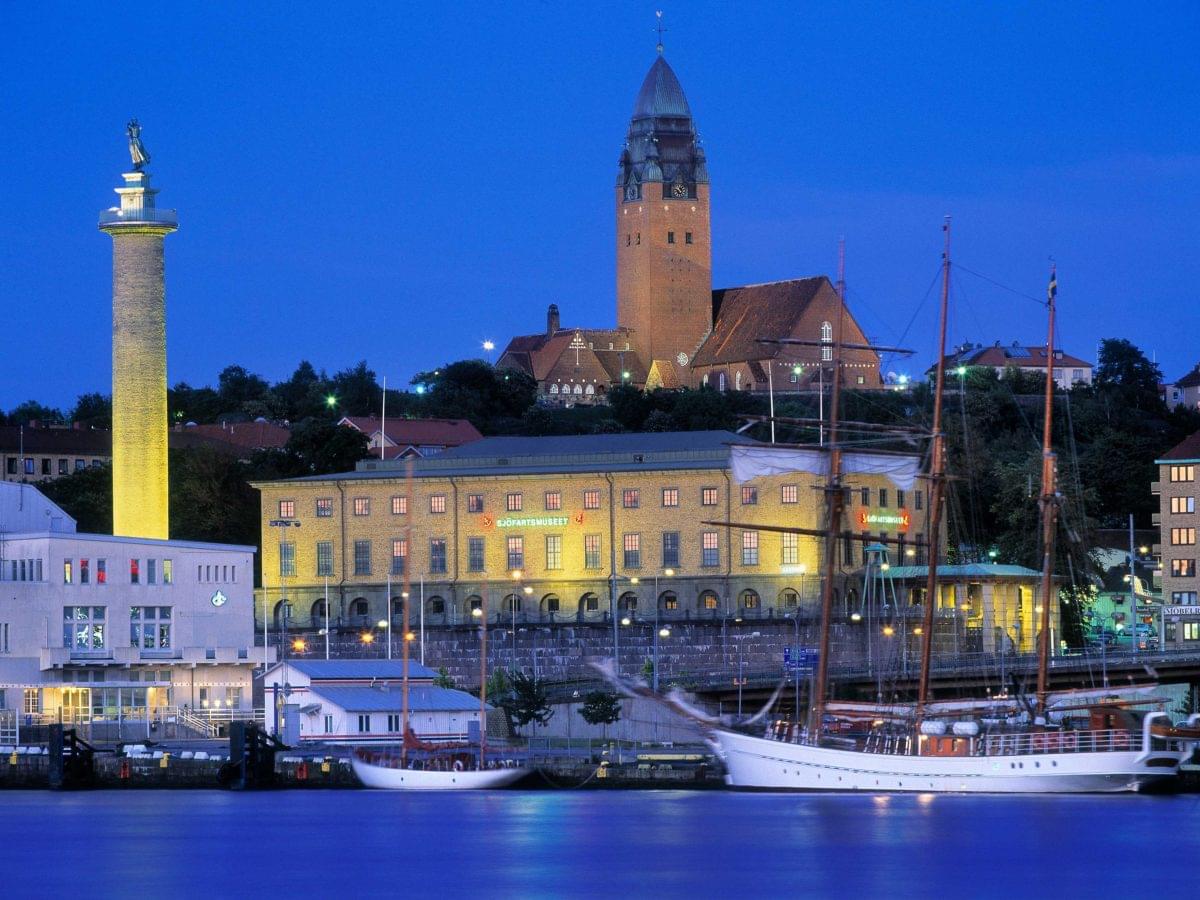
Masthuggskyrkan
At the top of Stigberget you’ll find the church Masthuggskyrkan, one of the most renowned National Romantic buildings and very typical for the period. Architect Sigfrid Ericson got the assignment to design the church after winning a competition, and the church opened in 1914. The characteristic style and location have made it a well-known landmark and a symbol for Gothenburg.
The Röhsska Museum
The Röhsska Museum is located at Vasagatan 37, just off the main boulevard Avenyn. Röhsska is the only museum in Sweden dedicated to design and art handicraft, and was designed by architect Carl Westman and opened in 1916. The design is typical for the national romantic spirit of that time. Already in the 1930s the museum was extended with a smaller addition made in the typical functionalistic style of the 1930s. Between 1957 and 1962 yet another extension was made.
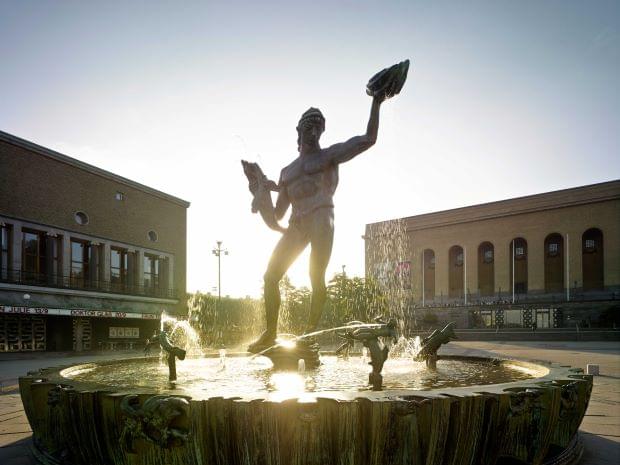
The square Götaplatsen
Götaplatsen at the end of the main boulevard Avenyn was created for the World Expo in 1923. Here you’ll find the characteristic Poseidon statue by Carl Milles, the Gothenburg Museum of Art, the City Theatre and the Concert Hall.
Otterhall
The construction of Otterhall, or the Skyscraper as it is also called, started in 1927 and when the building was completed two years later it was proclaimed Gothenburgs first skyscraper. Even today it is one of the tallest buildings in Gothenburg. Otterhall is located in a steep slope, meaning that the facade on Stora Badhusgatan reaches 17 storeys, while the facade on Lasarettsgatan only comes to 14 storeys. The facade was originally plastered but has since been clad in coper panel.
The Gothenburg City Theatre
Gothenburg City Theatre, located at Götaplatsen, was completed in 1934. The elegant architecture, signed Carl Bergsten, is designed according to the functionalistic ideals of the 1930s but also features a few classical traits, for example in the columns.
The Concert Hall
The Concert Hall at Götaplatsen was designed by architect Nils-Einar Eriksson and opened in 1935. Eriksson was trained in the functionalistic style but chose to give the Concert Hall a more Neo-classical facade. The well-preserved interior is a real design treat and the main hall is decorated with panels in Sycamore mapel. The acoustics is considered to be among the best there is.
The cinema “Flamman”
Light, plastered facade, almost flat roof and windows without mullions; with its distinct functionalistic style the former cinema Flamman at Redbergsplatsen stands as a representative for its time and is protected as a Listed Building since 2006. The building, nowadays housing Finska Pingstkyrkan, was completed in 1935 and designed by architect Sten Branzell, the very same architect who in collaboration with Uno Åhrén established the city plan of 1935.
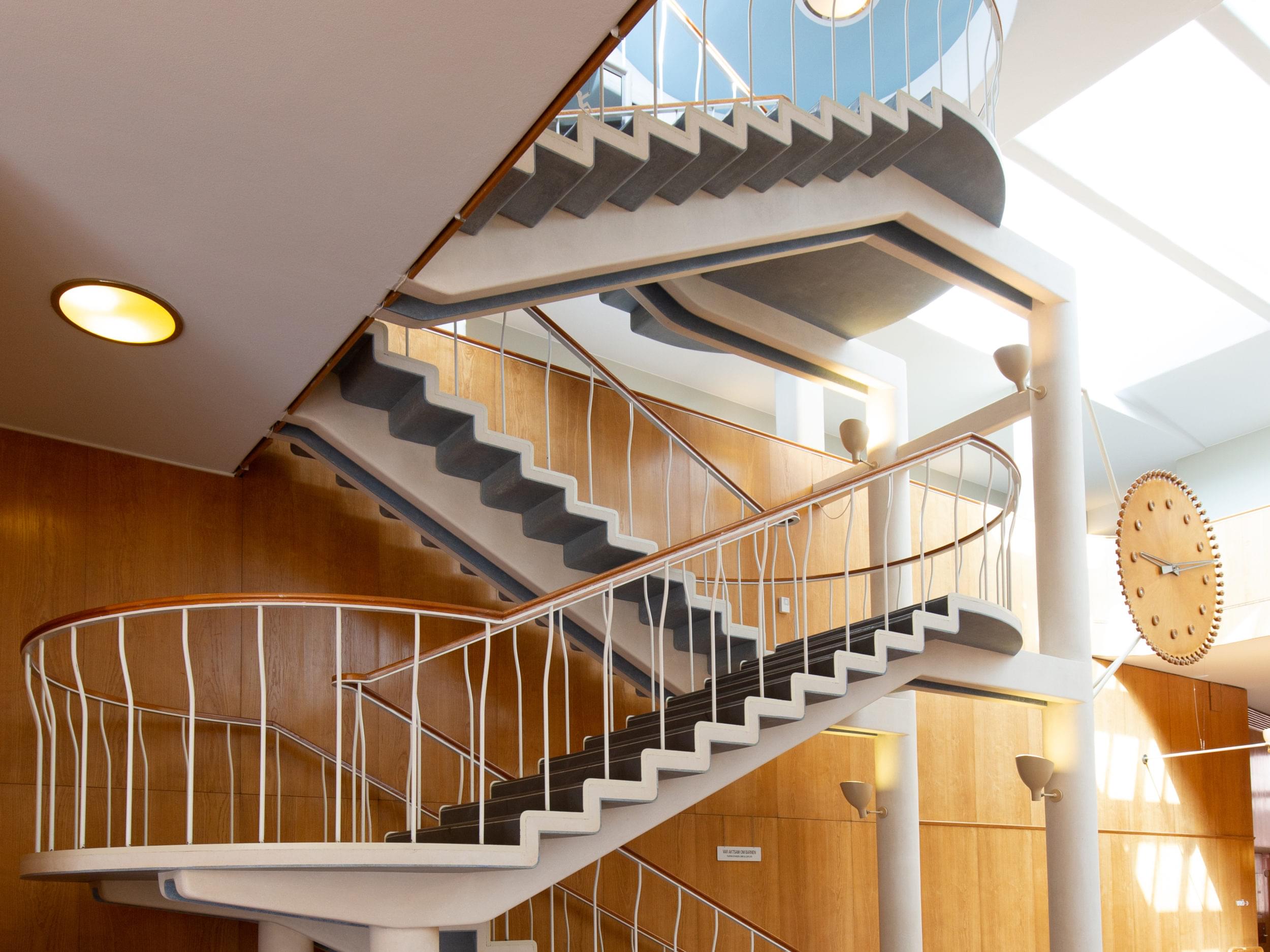
The Town Hall – new and old
An architectural walk is not complete without a stop at the square Gustaf Adolfs torg. The town hall was completed in 1672, but as time passed it was considered too small. In 1912 a competition was won by architect Gunnar Asplund and his functionalistic addition to the building was completed in the autumn of 1936. His way of blending the old and the new part has reached international recognition.
Guldheden
The north part of neighbourhood Guldheden was developed with apartments in several steps between 1941 and 1964. The area has reached great national and international recognition and is considered being of a national interest due to its cultural-historical value as a “model area regarding housing construction in the 1940s and 50s, and a very good example of how ideas about neighbourhood planning were realized”.
From the 1950s until present day
The Eriksberg crane
In Eriksberg on Hisingen you’ll find the 70-metre high harbour crane – a distinct landmark reminding us of the glory days of shipbuilding. The gantry crane was completed in 1969, making it possible to fix ships as large as nearly 500,000 tonnes. The country administrative board appointed the red harbour crane a historic building in 2012, to be preserved for the future.
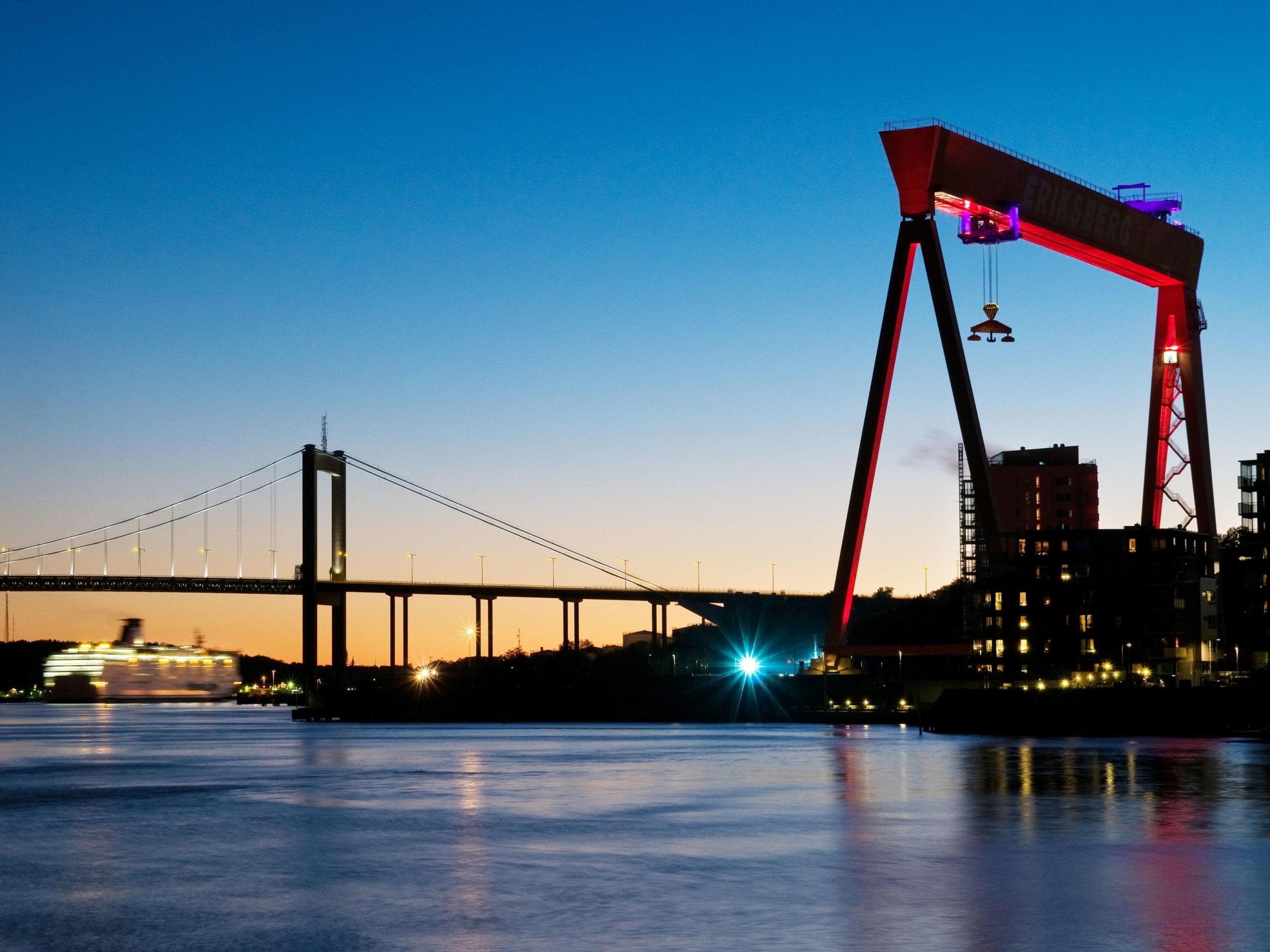
The Lipstick Skyscraper
The harbour is also where you can get up close to the red and white skyscraper commonly referred to as “the lipstick”. The building, designed by Ralph Erskine, was completed in 1989 and stands 86 metres above sea level.
The Gothenburg Opera
The opera house from 1994 is located in the Lilla Bommen harbour. The architect Jan Izikowitz found inspiration not only in the world of opera, but also in the waterfront location and the maritime connection, bringing streamlined sails and elegant ship hulls to mind.
Restaurang Trädgår’n
Restaurang Trädgår’n is located in the Garden Society in the city centre. This has been a place for cafés and restaurants for over 100 years, and the current Restaurang Trädgår’n opened in 1998, at which time it was also nominated for the prestigious Kasper Salin award. In addition to the restaurant, Trädgår’n is also a concert venue and night club.

Universeum and the Museum of World Culture
A stone’s throw from Götaplatsen you’ll find Korsvägen where Universeum and the Museum of World Culture are located. The two modern buildings are placed next to each other. The first one opened in 2001 and was designed by Wingårdh Architects, while the latter one was designed by London duo Brisac-Gonzales Architects, opened in 2004 and was awarded the Kasper Salin prize the same year. About 20 years since the inauguration of Universeum’s main building, the new addition, a spherical visualization dome where the audience can expect a magnificent visual experience, was inaugurated. This time, too, it is the architectural office Wingårdhs that is behind it.
Kajskjul 107 – new life for a former pier hangar
Kajskjul 107, a pier hangar in Frihamnen, the free-port, was built in 1944 and designed by Wilhelm Mattson. At the time it was a coffee storage. When the hangar was renovated in 2001 the functionalistic style was kept, along with the large windows, loading docks and loading balconies. Kajskjul 107 is a great example of how to bring new life to buildings like this while maintaining the culture-historical values.
The Channel House
The so called Kanalhuset, the Channel House, is found in the Lundby harbour on the northern bank of the river Göta Älv. That is where Swedish Television and Radio are located in Gothenburg. The building, situated right by the waterfront, features large windows and an interesting shape. It was designed by Arkitekterna Krook & Tjäder and was completed in 2003. The premises in the old media house were quite a bit larger, due to the fact that older technique required more space and more staff than today’s modern equipment.
Pedagogen
University building Pedagogen, the Pedagogue, where a large part of the Faculty of Education is located, moved from Mölndal to Grönsakstorget in the city centre a few years ago and comprises several buildings: Sociala Huset (on the left above) erected in 1855, Gamla Latin from 1861 and the new buildings and extensions that opened in 2006. Yellow brick walls meet light glass facades, shaping a modern environment for education.

The Cog
The northern bank of Göta River (Norra Älvstranden), and especially Lindholmen Science Park, is the place to go for contemporary design. The old shipyard area has been transformed into a modern neighbourhood including offices, a university campus and residential buildings. The most eye-catching feature is Kuggen, “the cog”, a colourful round building with triangle-shaped windows, designed by Gothenburg-based architect Gert Wingårdh.
Kville Market Hall
Kville Saluhall, the market hall at Vågmästareplatsen on Hisingen opened in 2013 and was nominated for the Mies van der Rohe award, the EU prize for Contemporary Architecture.
The Sauna in Frihamnen
Frihamnen on the northern river bank opened in 1922 and the area is going through some major changes nowadays as the old ship building industry is being replaced by new activities by the river. Here you’ll find, among other things, the public sauna, created by German architect collective Raumblabor Berlin. It is in large parts constructed from recycled material – for instance, the changing rooms were made from 12,000 recycled bottles.

Putsegården
The old Putsegården, located at the outskirts of Lundby Kyrkby on Hisingen, was originally built in the 18th century and today it stands as a symbol for the farming history of the area. The neighbourhood has of course gone through a lot of changes over the centuries since the old church in Lundby was erected in the 14th century, but quite a lot of the medieval village character has remained, and in 2016 around 40 modern apartments were completed in a unique building that connects the old Putsegården farm-house and the adjacent apartment buildings from the 1950s.

The bridge Hisingsbron
In 2021, the new bridge Hisingsbron was completed and thus replaced the old Göta Älvbron. The new bridge is not only a landmark for Gothenburg, but also functions as a new link between people and neighbourhoods. The Hisingsbron is a steel lift bridge with the southern bridge attachment in the Central Station area and the northern one between Ringön and Frihamnen at the island of Hisingen.
The Gårda area
A lot has happened at Ullevi/Gårda area. Skanska’s Citygate, which is the tallest office building in the Nordics, as well as Jacy’s Hotel & Resort and Gårda Vesta have completely redesigned Gothenburg’s eastern cityscape.

Platinan
With its 60,000 square meters, the glass house Platinan stands firmly right next to the bridge Hisingsbron by the Central Station area. The Platinan project is part of Älvstaden, the Nordic region’s largest urban development project, where the goal is to create a vibrant and attractive inner city.
Hotel Draken
One of Gothenburg’s perhaps most ambitious hotel projects will open its doors to the public in autumn 2023. At just over 100 meters, the hotel is Gothenburg’s tallest hotel and has thus redrawn the city skyline at Järntorget.
And tomorrow?
Gazing into the near future, there are many exciting visions and plans for the development of the city to explore. Here are some of the suggestions and ongoing projects that you’ll want to keep an eye out for!
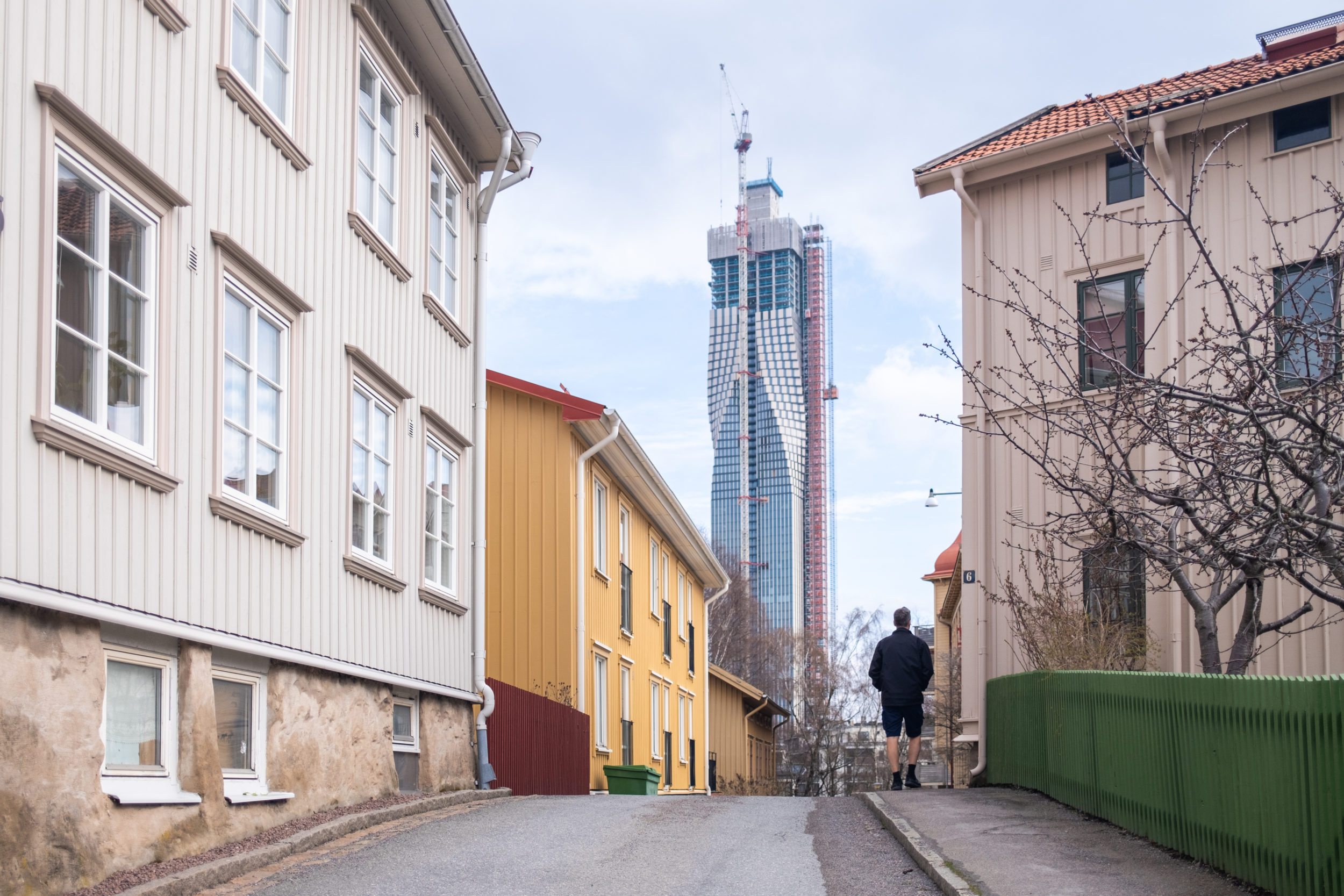
Karlatornet, the Karla Tower
A socially, financially and environmentally sustainable neighbourhood is the objective when new area Karlastaden is being developed. And Karlavagnsplatsen will also be the location of the tallest building in the Nordic countries: 73 storeys high tower Karlatornet.

Gothia Tower 4 – +One
At the moment, Svenska Mässan is planning a fourth tower at the Korsvägen intersection, which will, by all accounts, stand out from the three already existing towers. Among other things, the new tower is to be higher than the others, and is expected to increase hotel capacity from 1,200 rooms to 1,600. The building is expected to be completed in 2025.
The Central Station area
The area around the central station, today dominated by traffic, is one of the most important development areas in Gothenburg. Within 20 years we could be looking at 2000 new homes, green areas and places for culture and work here; a welcoming entrance to Gothenburg with a denser urban community and taller buildings than today.
Gothenburg before and after
At stadsutveckling.goteborg.se you can see many exciting visions and plans for the future Gothenburg, including before and (visionary) after images.



